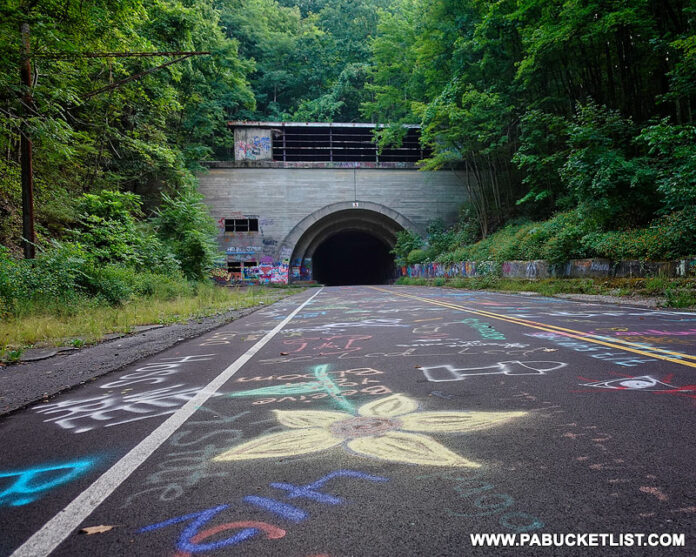
If you’re looking for the best abandoned places in PA you can legally explore, this is the article for you!
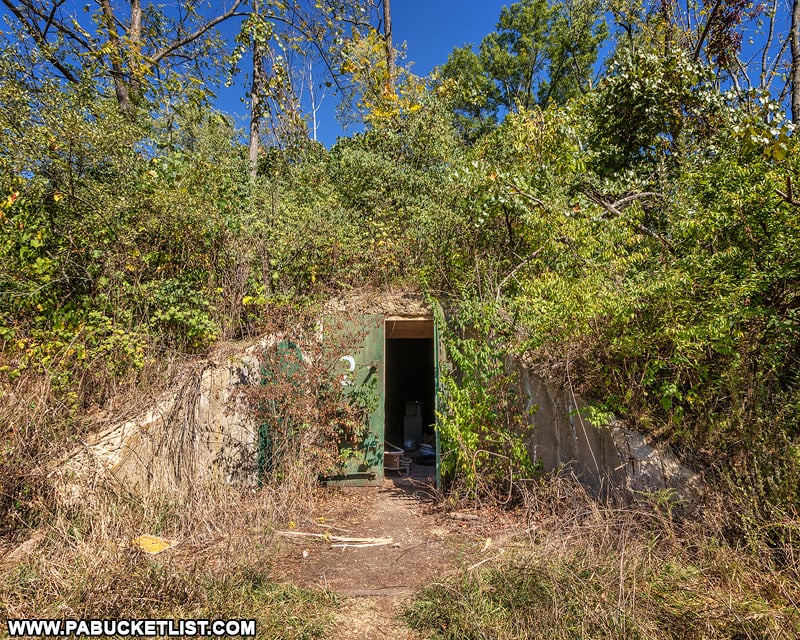
This article highlights 34 abandoned places in PA that continue to fascinate visitors decades after they outlived their intended purposes.
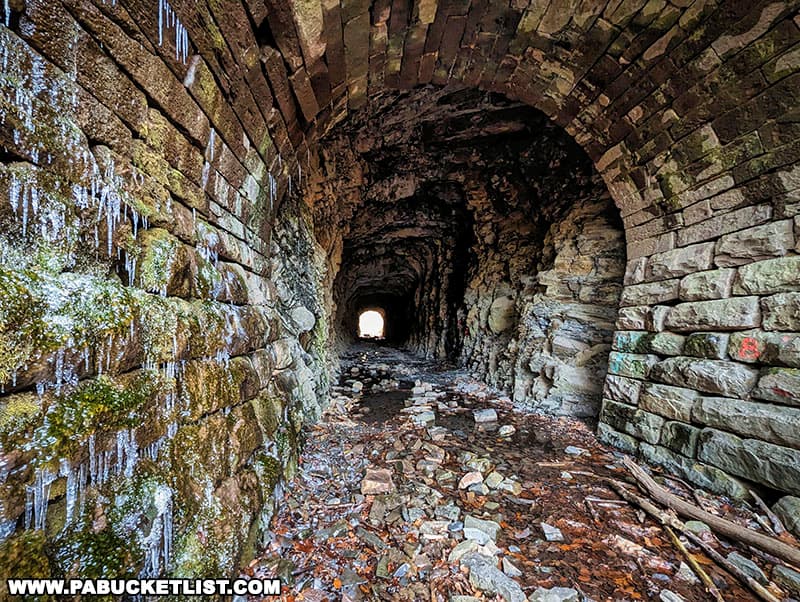
Some of these sites were abandoned due to technological shifts that left them obsolete.
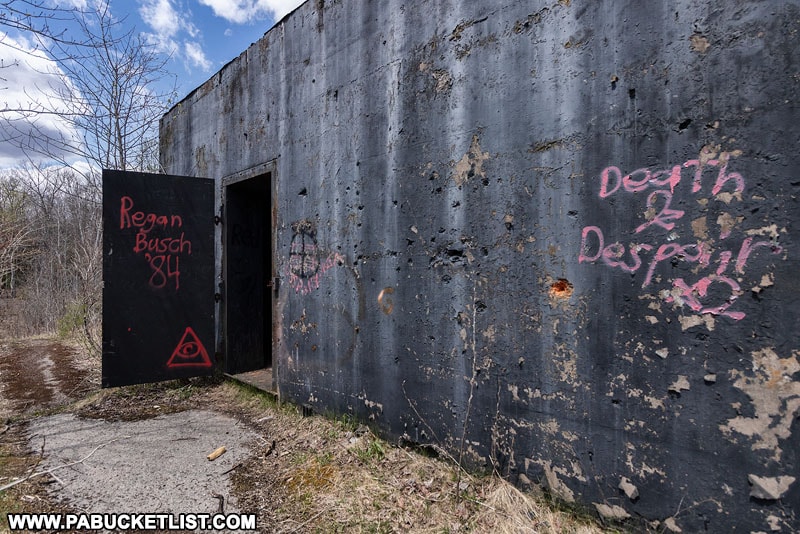
Others were abandoned after natural disasters.
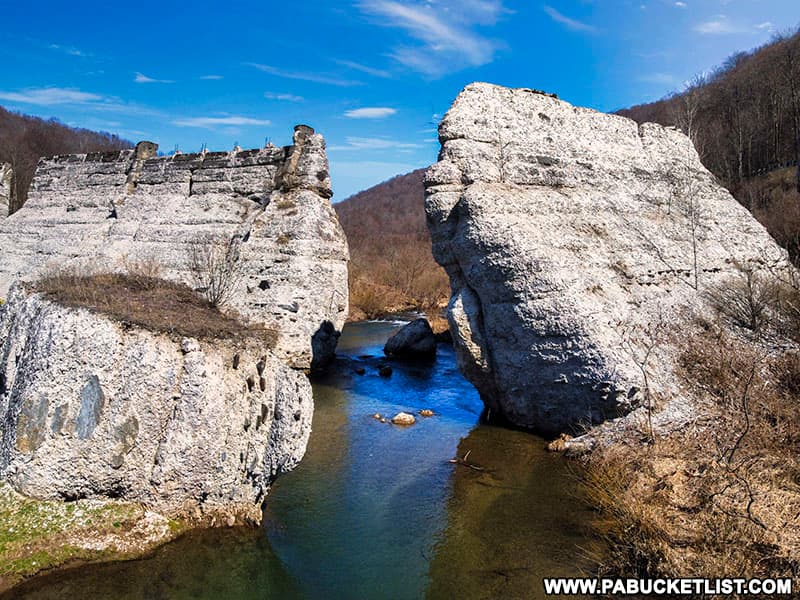
Some of them have been, in more recent times, repurposed for new uses.
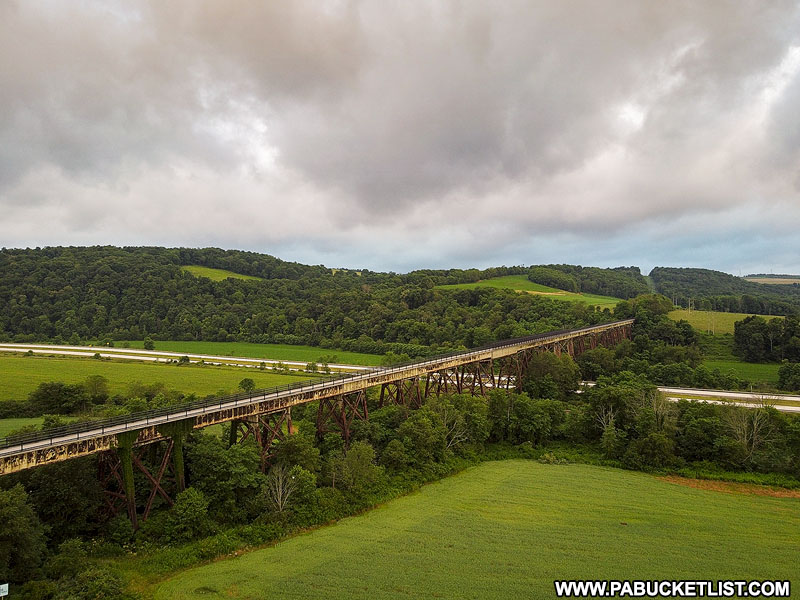
But one thing all of them have in common is that the Earth is slowly reclaiming them, and one day they will all be but distant memories.
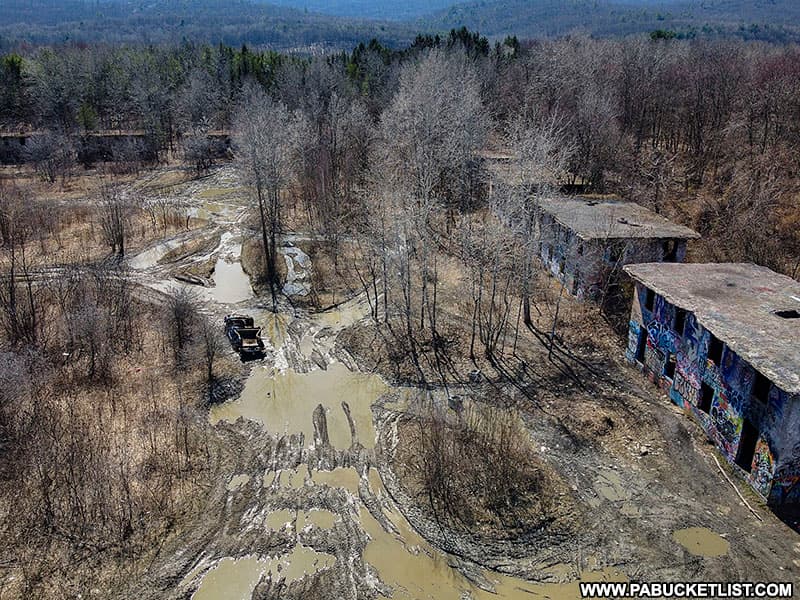
But before they are gone, I’ll share with you a few of the more interesting abandoned places in PA I have explored in recent years.
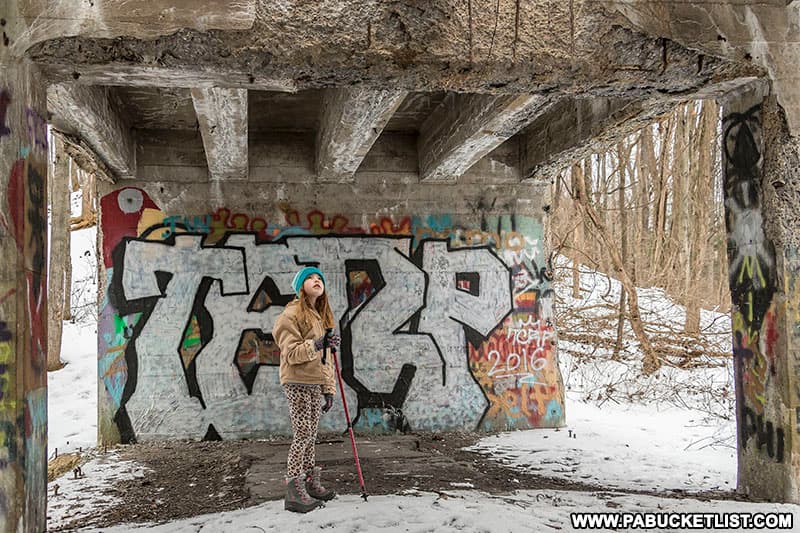
All of these abandoned places in PA were legal to explore at the time I visited them – but that may not always be the case in the future, so please heed any “no trespassing” signs or the like should they pop up in the future.
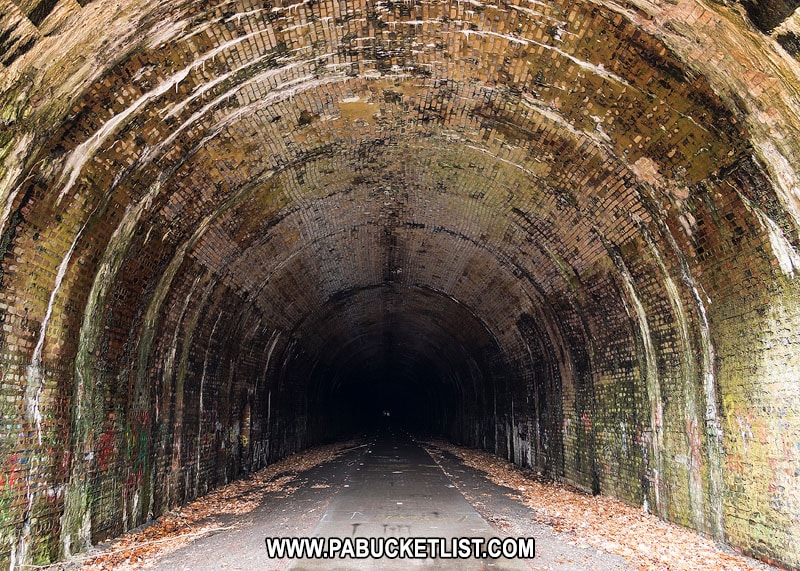
For each destination below, be sure to click on the blue text link to view detailed directions and in-depth information about it.
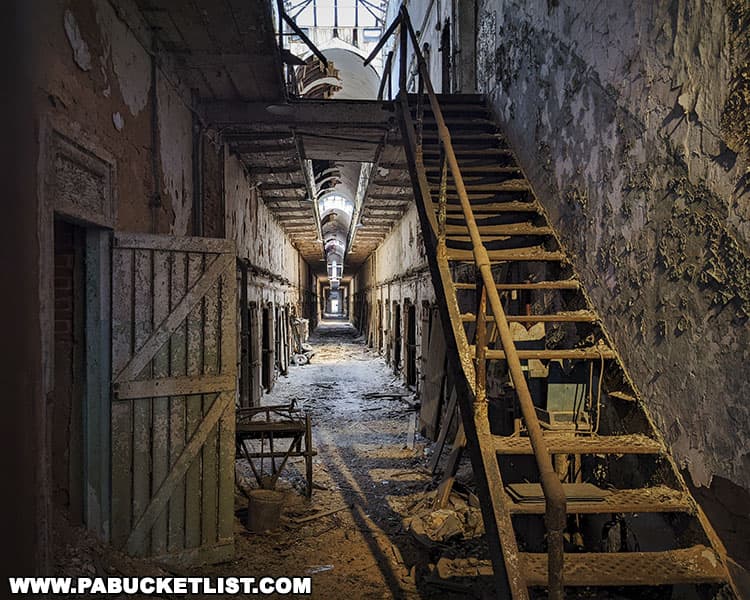
Legal Disclaimer
Many of these properties are not maintained or monitored for safety conditions, and therefore these are all strictly VISIT AT YOUR OWN RISK DESTINATIONS!
By voluntarily exploring any of these locations, YOU assume the risk of any personal injury or damage to personal property, and shall not hold the author liable for any injuries, losses, or damages that may occur while visiting any of these locations.
1. The Abandoned PA Turnpike
Let’s start with the biggest, and some would say best, abandoned place in PA – the Abandoned Pennsylvania Turnpike!
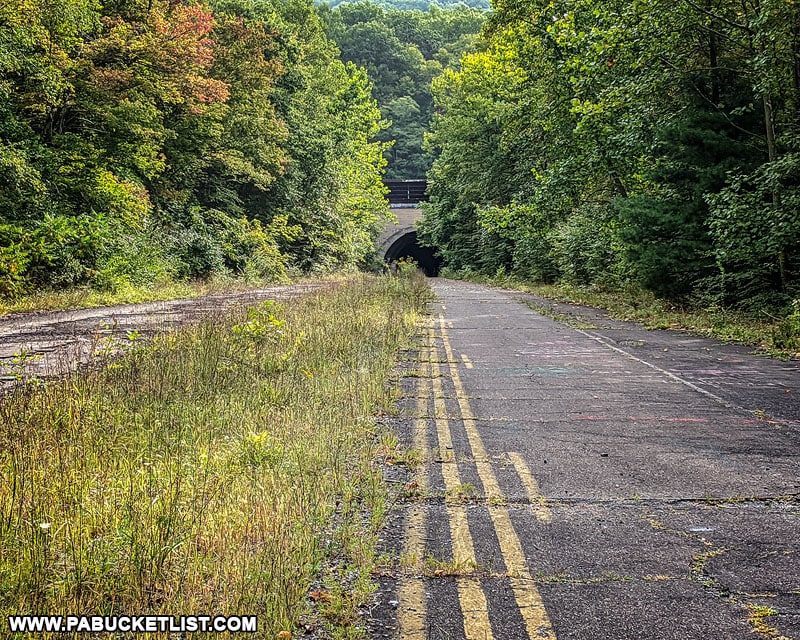
Thirteen miles of abandoned superhighway, last open to normal vehicle traffic in 1968.
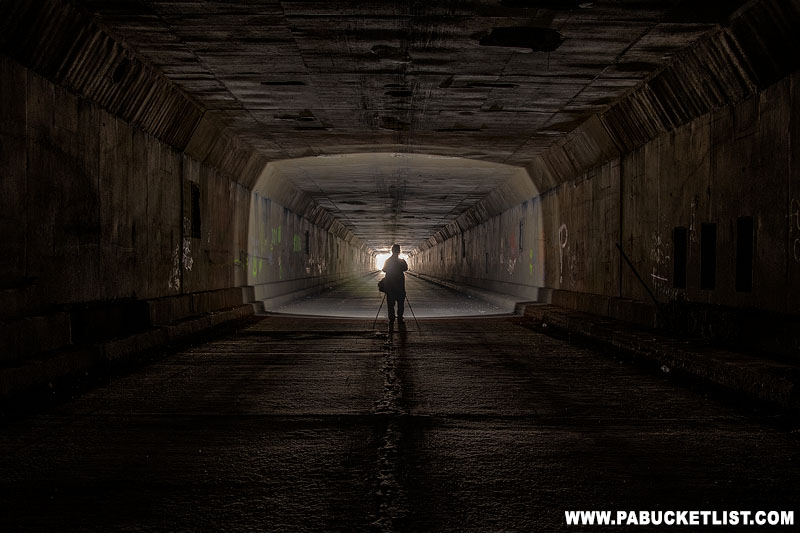
The highlights of this abandoned superhighway are two tunnels, both roughly a mile long.
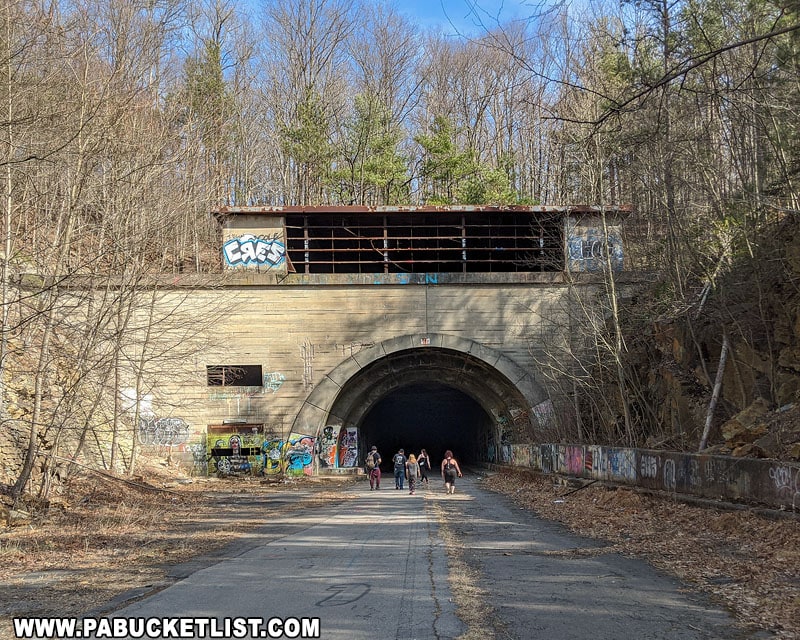
Today the Abandoned PA Turnpike is a non-maintained hiking/biking trail, but how long it remains a viable destination for those activities is anyone’s guess.
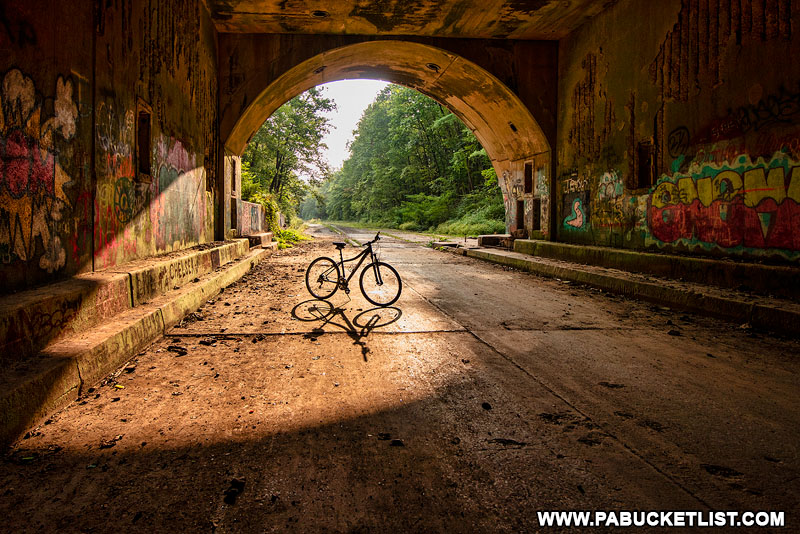
2. Concrete City
Concrete City lies tucked away in an overgrown, city-owned plot of land on the outskirts of Nanticoke, in Luzerne County.
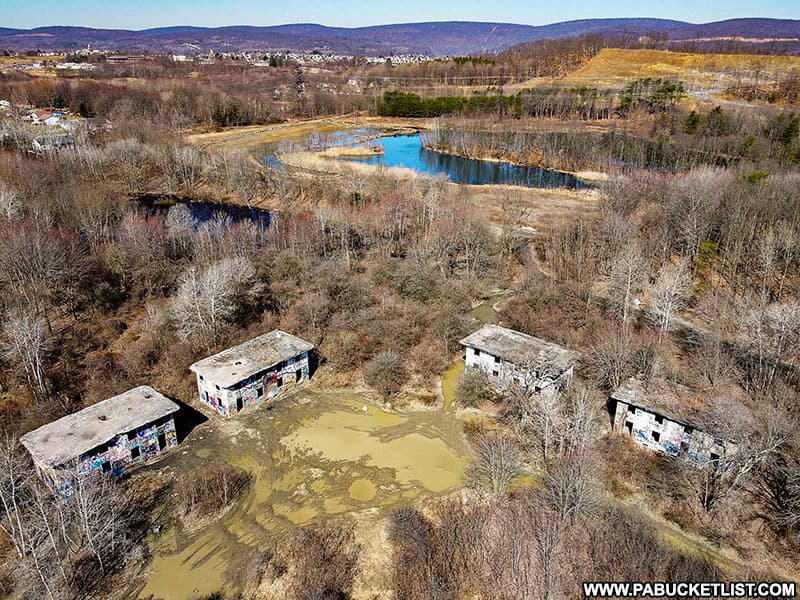
At the time of its construction Concrete City was considered to be a “community of the future”, but it was abandoned a mere 11 years after the first residents moved in.
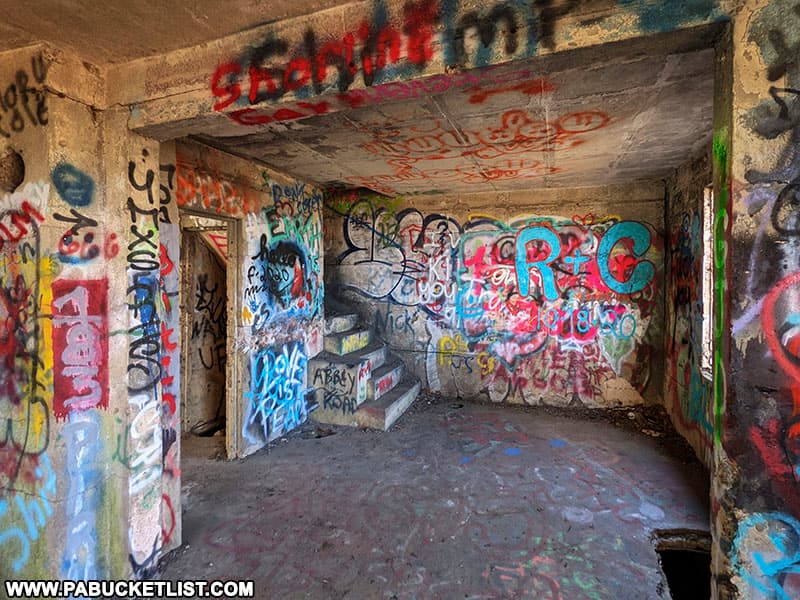
Despite occasional reports of efforts being made to preserve Concrete City for its historic merits, you’d be hard pressed to find any evidence of that when visiting today.
And due to the deteriorating condition of the buildings, it’s certainly possible that at some point Concrete City will simply become off-limits for liability reasons.
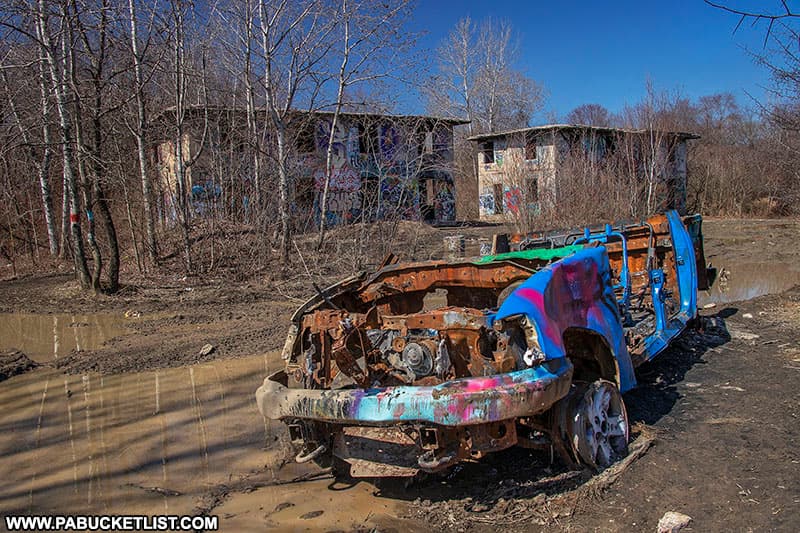
3. Centralia
Through a series of calamitous events, Centralia, a once-thriving settlement buoyed by the anthracite coal industry, descended into near-total abandonment and has become known as “PA’s Toxic Ghost Town.”
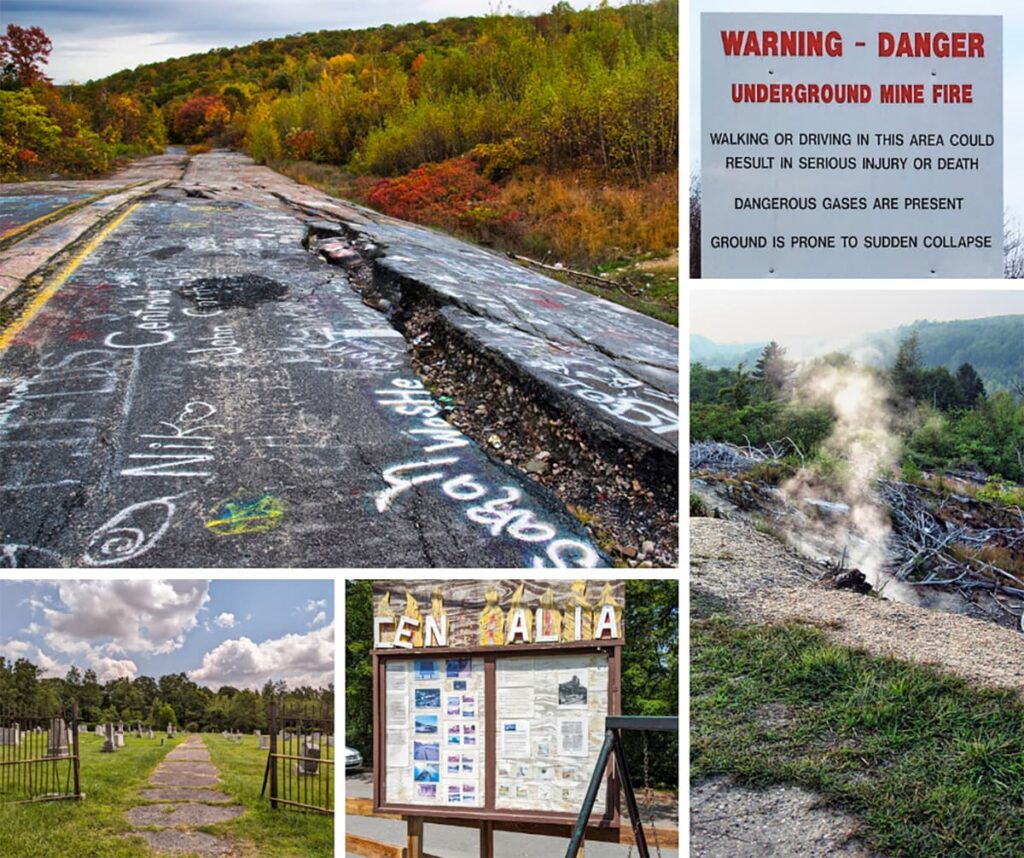
The catalyst for this transformation was not a natural disaster or economic downturn but a devastating mine fire that has raged beneath Centralia’s streets for over six decades, erasing nearly all traces of the community that once thrived above.
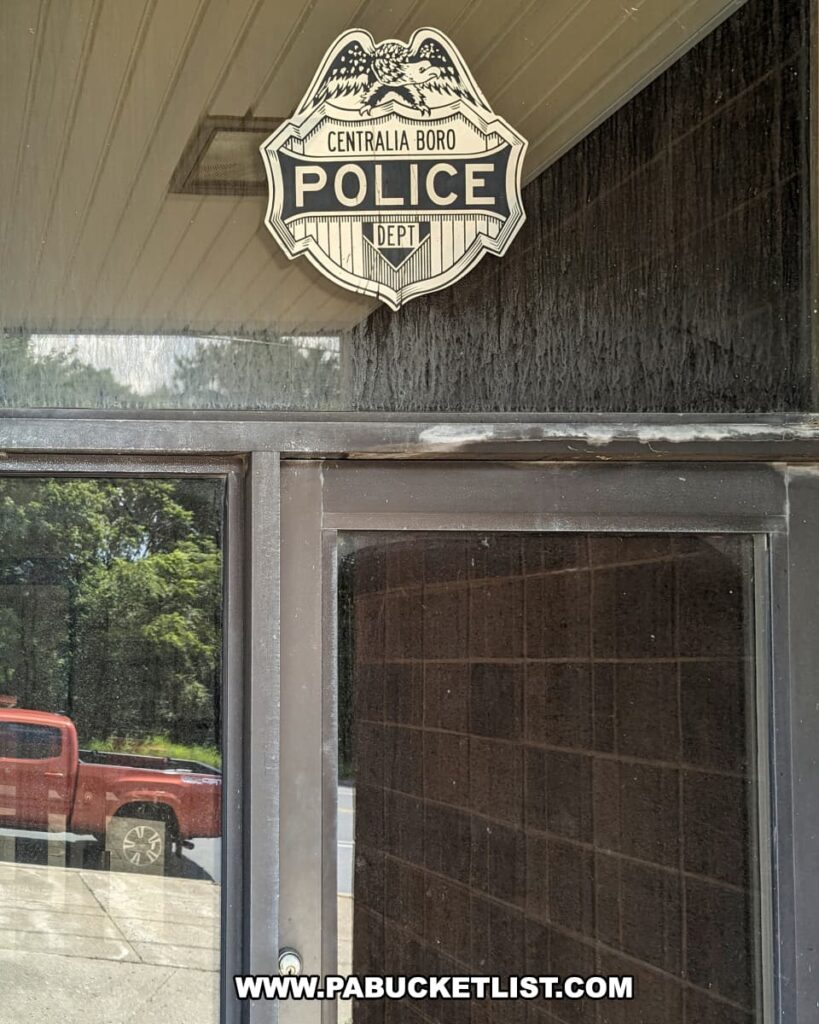
Today, Centralia stands as a somber relic of its former self, with empty streets serving as a silent testament to its decline.
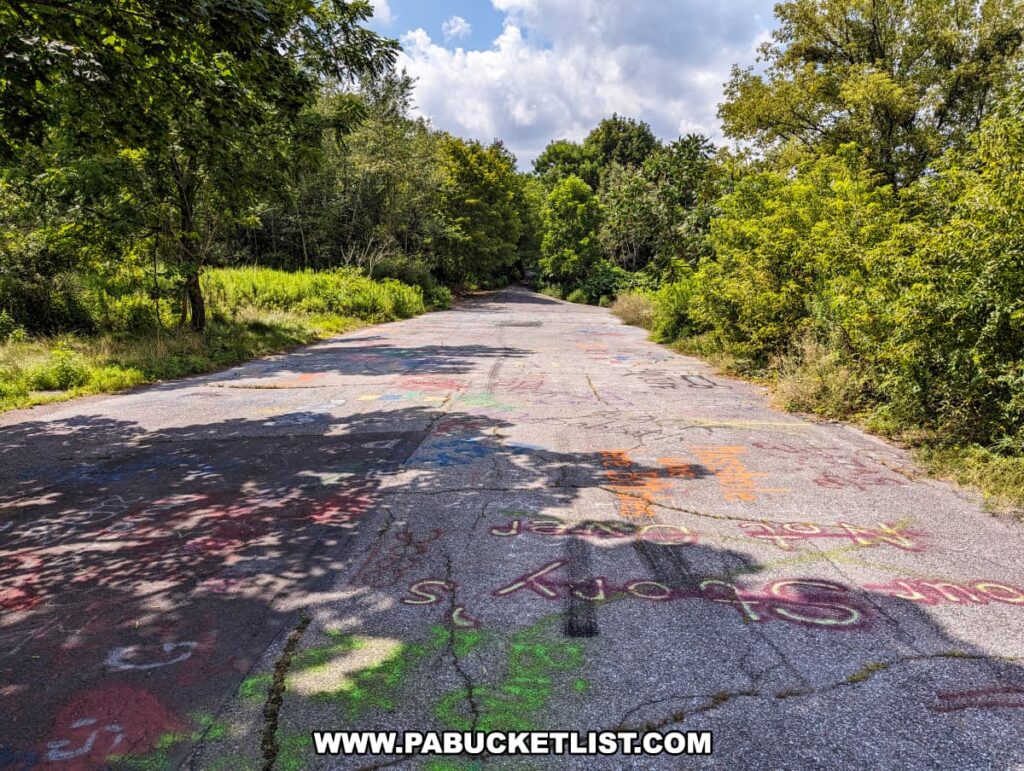
4. Abandoned Alvira Munitions Bunkers
The abandoned Alvira munitions bunkers are remnants of the American WWII war effort, as well as reminders of what lengths the federal government will go to to seize private property for “the greater good”.
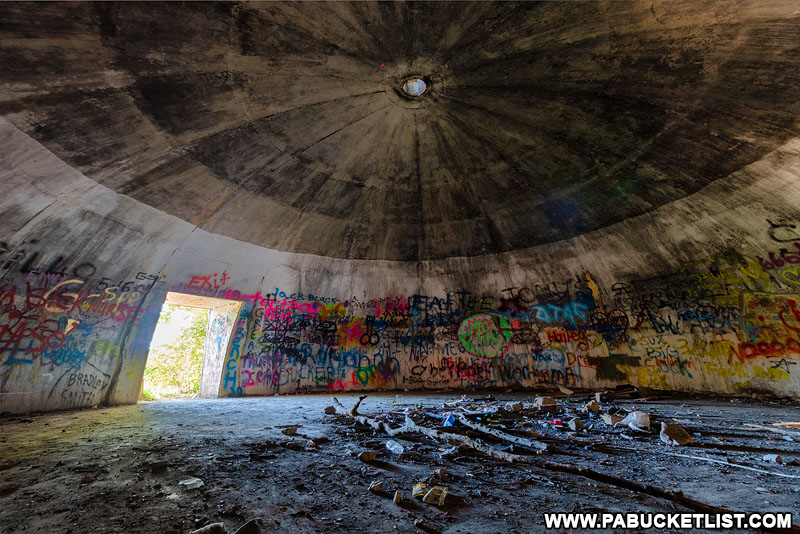
In the case of Alvira (originally founded as Wisetown in 1825), the federal government used the courts and eminent domain to force residents to accept buyouts of their homes, so that their entire town could be leveled and turned into a TNT manufacturing plant and storage facility known as the Pennsylvania Ordnance Works.
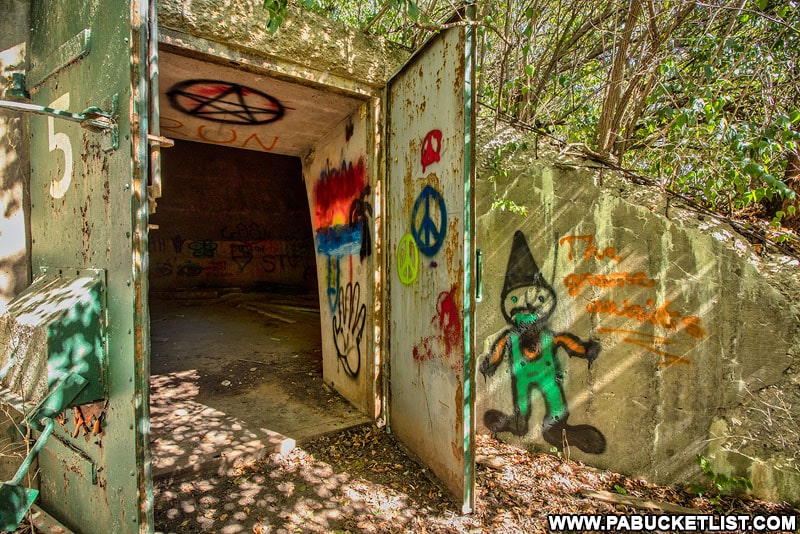
Today, the Alvira bunkers, as well as remnants of Wisetown, are located in the Union County portion of State Game Lands 252, approximately 7 miles south of Williamsport.
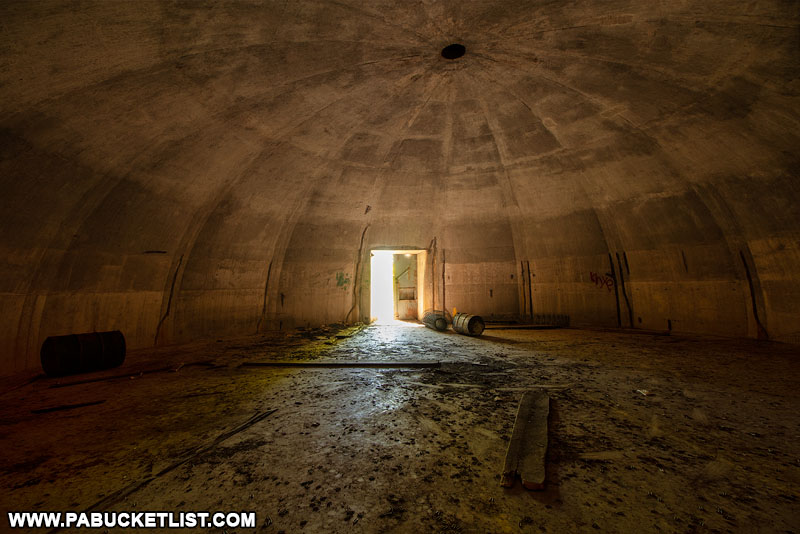
5. The Abandoned Bayless Paper Mill
The abandoned Bayless Paper Mill will be forever linked to Pennsylvania’s second-deadliest flood on record, the Austin Dam Flood of 1911.
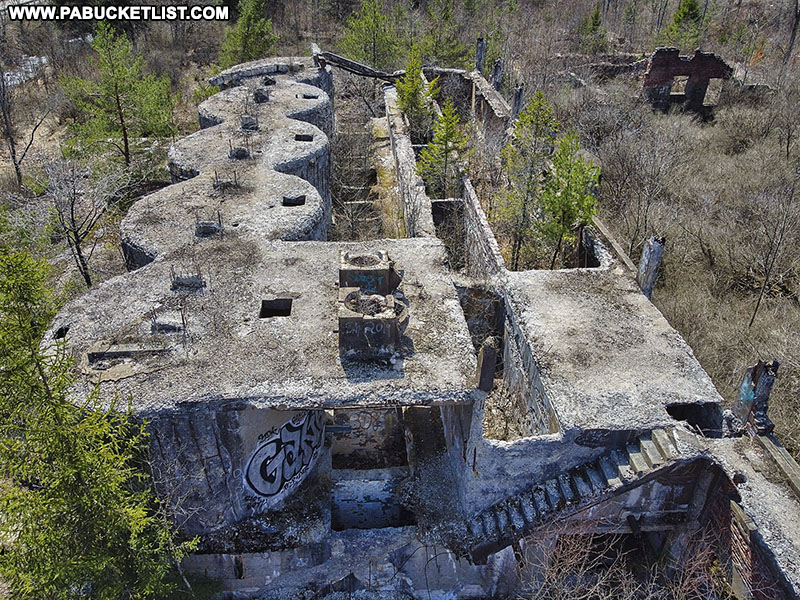
Construction on the Bayless Paper Mill in Potter County began in 1900, and the dam which provided the large volumes of water the mill required (and which ultimately failed and caused the flood) was built not long after that.
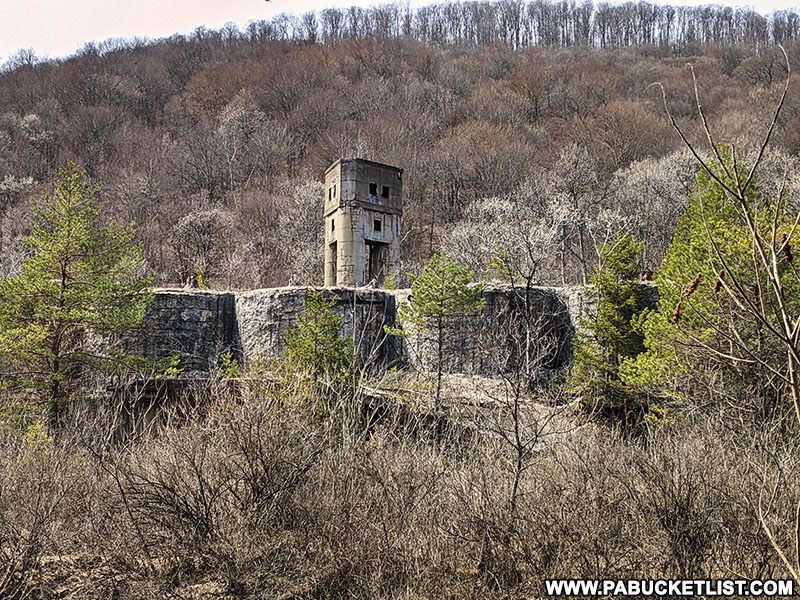
The Bayless Paper Mill was rebuilt after the flood in 1911, but ultimately succumbed to a massive fire in 1944 and was abandoned after that.
Today the abandoned Bayless Paper Mill is part of the Austin Dam Memorial Park in Potter County.
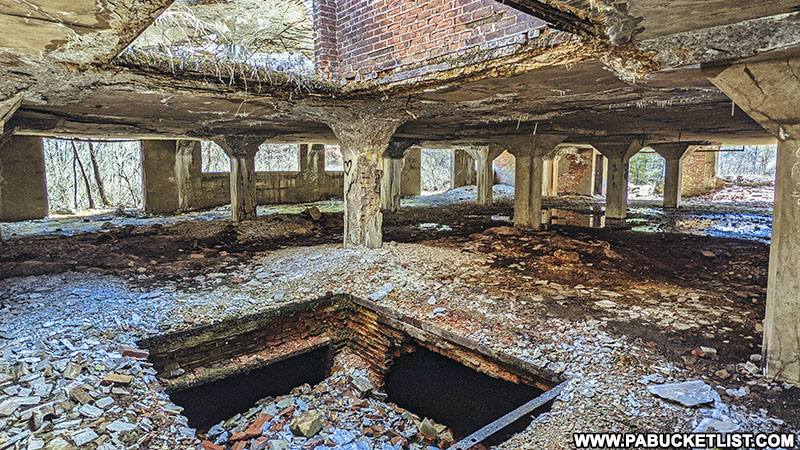
6. Austin Dam Ruins
Austin Dam in Potter County was billed as “the dam that could not break” at the time of its construction in 1909.
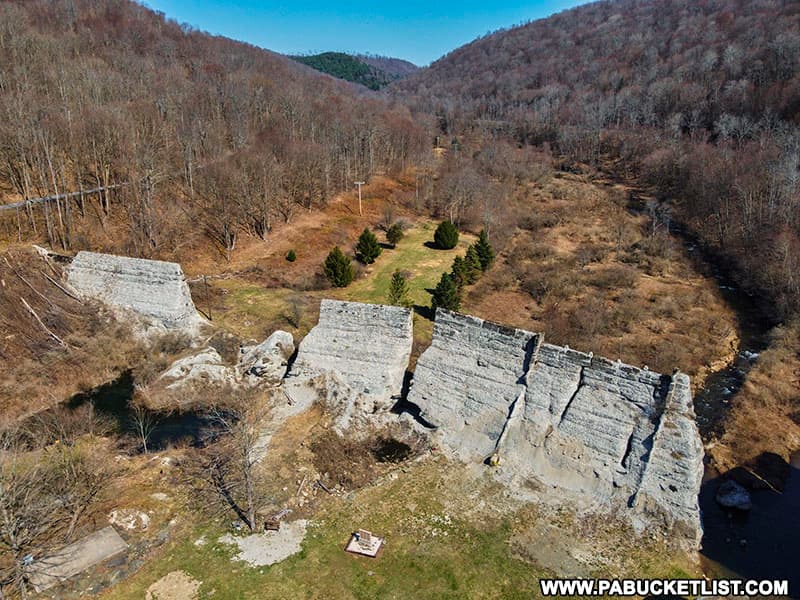
Yet two years later it broke, with catastrophic consequences.
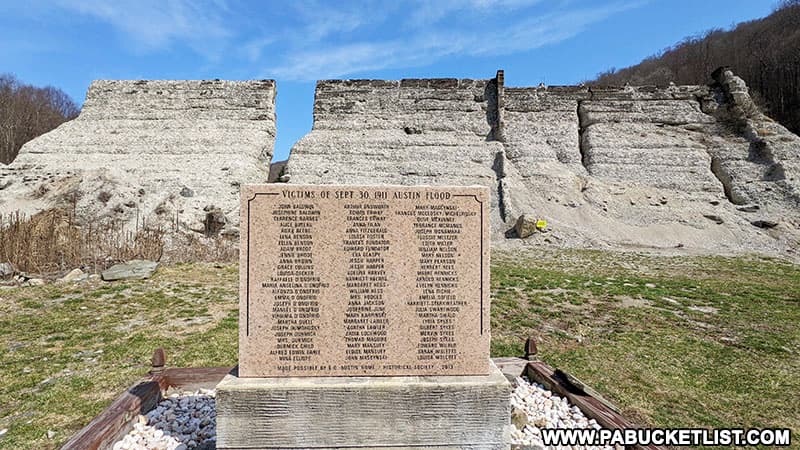
Today the ruins of Austin Dam are part of a memorial park dedicated to the 78 people who lost their lives in the flood of 1911.
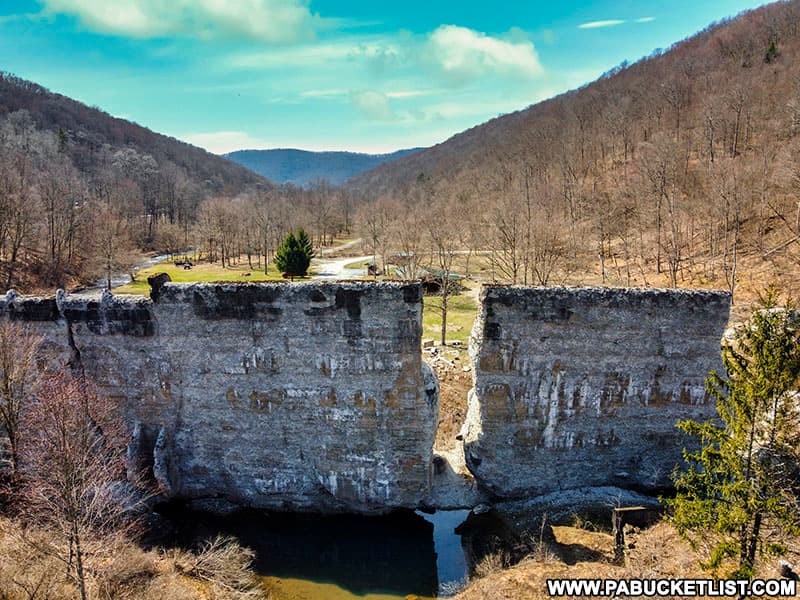
7. Abandoned Nuclear Jet Engine Testing Bunkers
The abandoned nuclear jet engine testing bunkers in the Quehanna Wild Area are a fascinating Cold War-era remnant of Pennsylvania history, now slowly being reabsorbed by the surrounding forest of Cameron County.
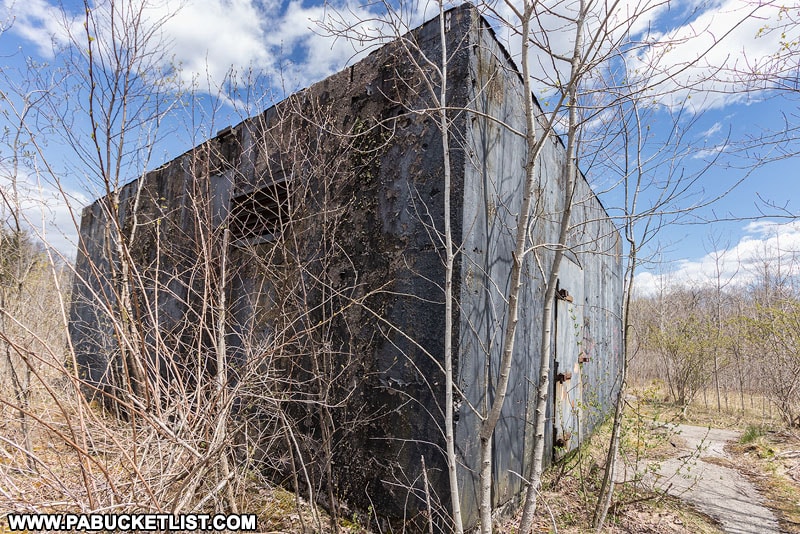
The goal of the work done at this once-secretive site was to develop nuclear-powered jet engines for the United States Air Force, so that fighter planes and bombers could stay airborne indefinitely, without refueling.
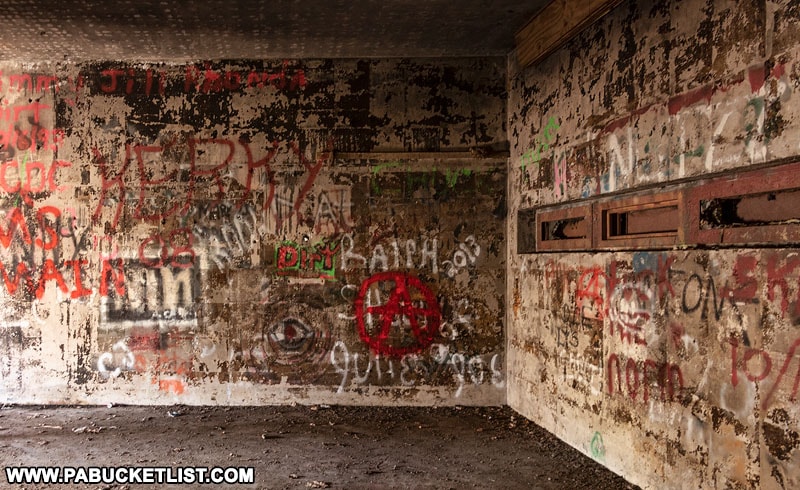
By 1960 the project was scrapped, and all that remains today are the nuclear jet engine testing bunkers themselves – large boxes of concrete and steel with tiny slit windows once covered by thick layers of blast-resistant glass, where engineers and technicians would have monitored the engines undergoing testing.
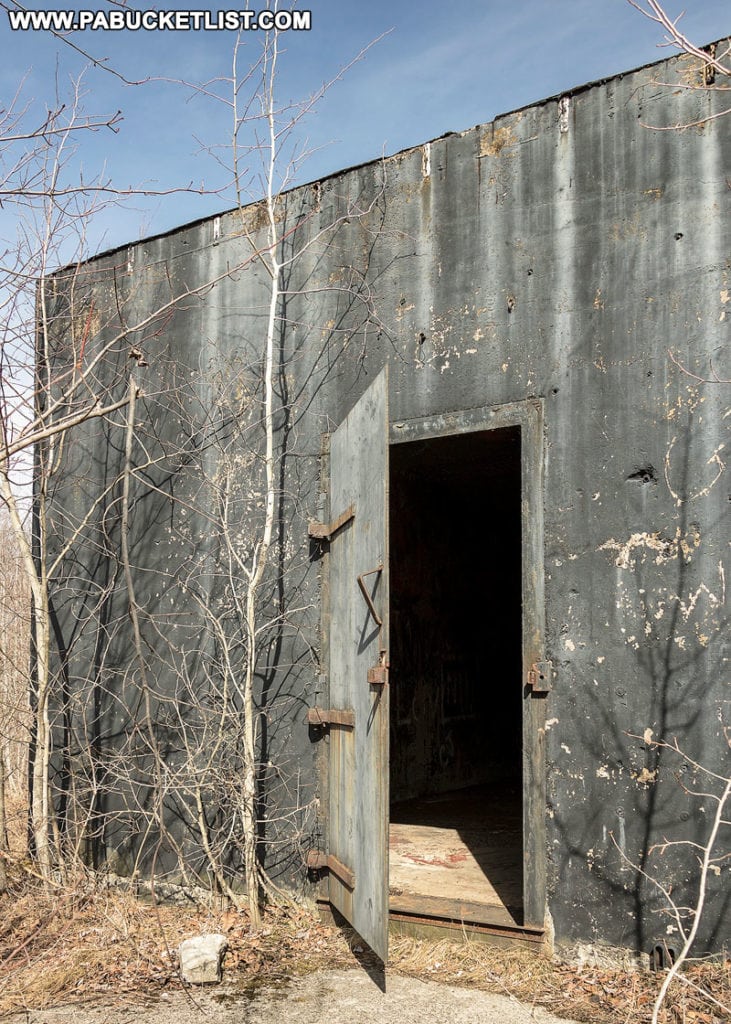
8. The Abandoned Kunes Camp
When the previously mentioned nuclear jet engine testing bunkers were built in Cameron County, local hunting camp owners were forced to abandoned their properties, and the abandoned Kunes Camp is one such property.
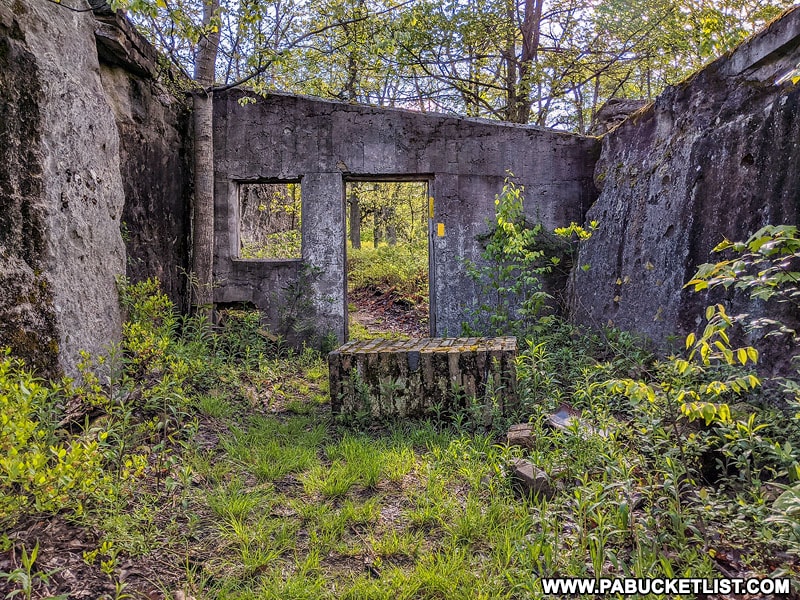
This ingeniously constructed camp has survived in part because two of the four walls are actually massive boulders that were incorporated into the camp structure itself.
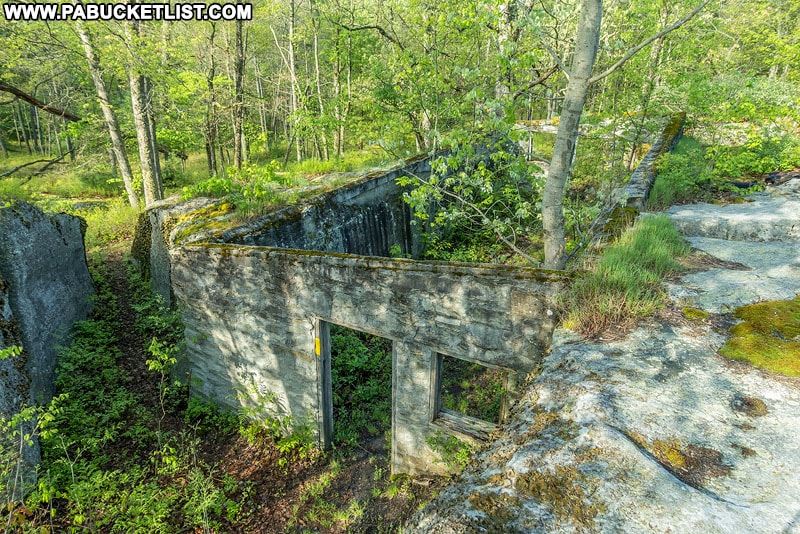
Today the abandoned Kunes Camp is part of the yellow-blazed Kunes Camp Trail in the Quehanna Wild Area.
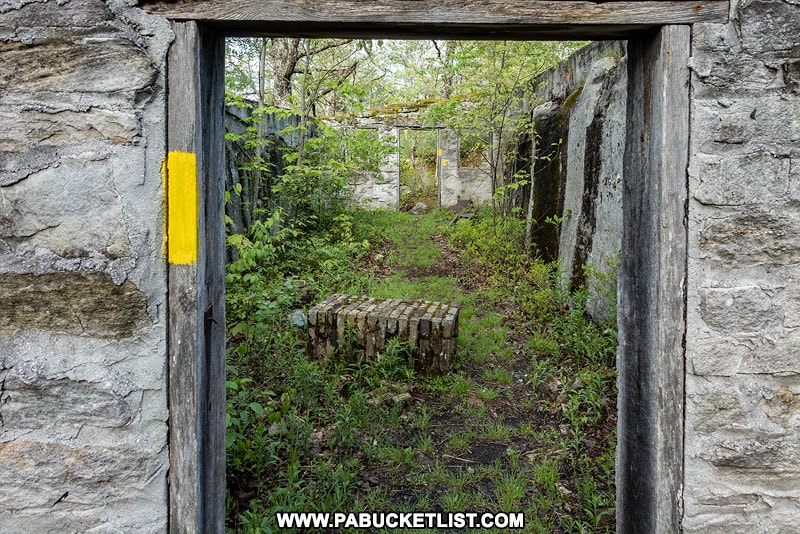
9. The Abandoned Dinkey Shed at the 1000 Steps
The Dinkey Shed was built in 1938 as a maintenance facility for the “dinkey trains” that pulled rail cars of ganister (sandstone) from the nearby Ledge Quarry in Huntingdon County.
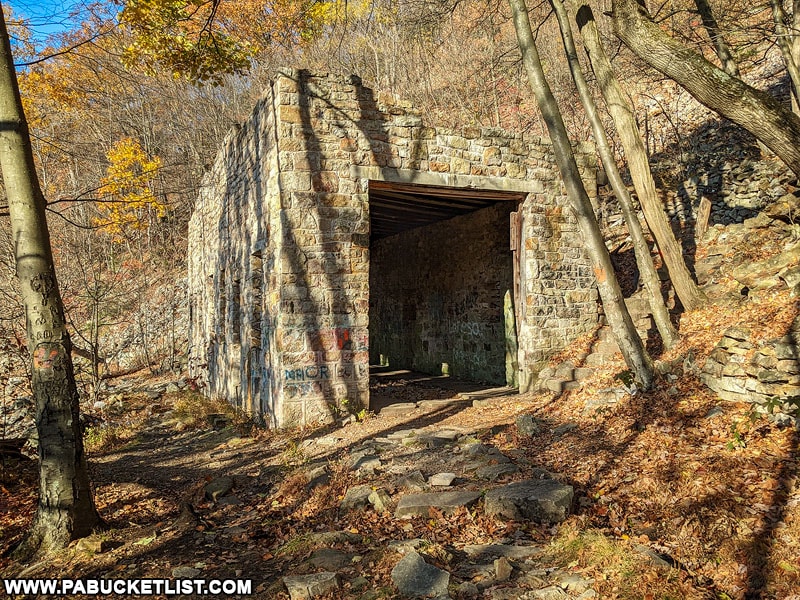
Abandoned when the quarry closed in 1952, the Dinkey Shed has since been incorporated into the 1000 Steps, part of the Standing Stone Trail and one of the most popular hikes in central Pennsylvania.
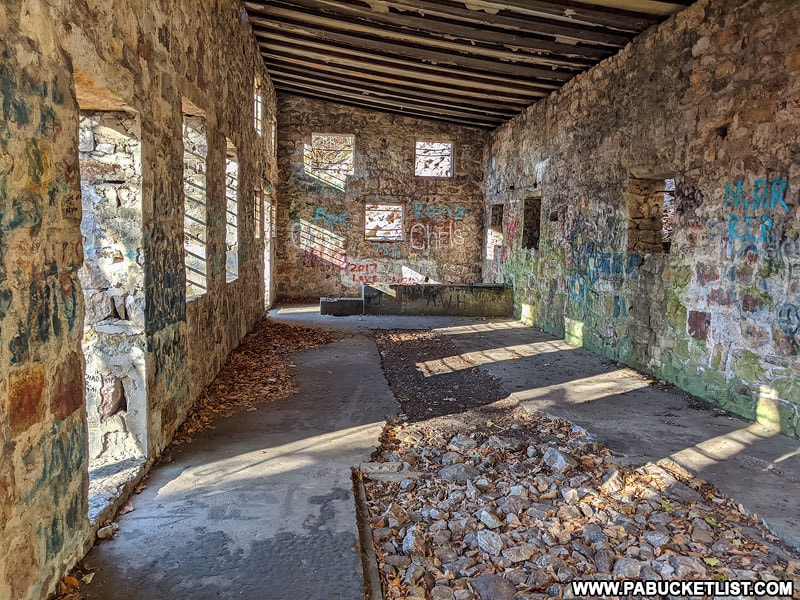
10. The Ghost Town of Scotia
Driving along Scotia Range Road through State Game Lands 176 near State College now, you’d never guess that you are passing right by the location of a once-thriving iron mining boomtown.
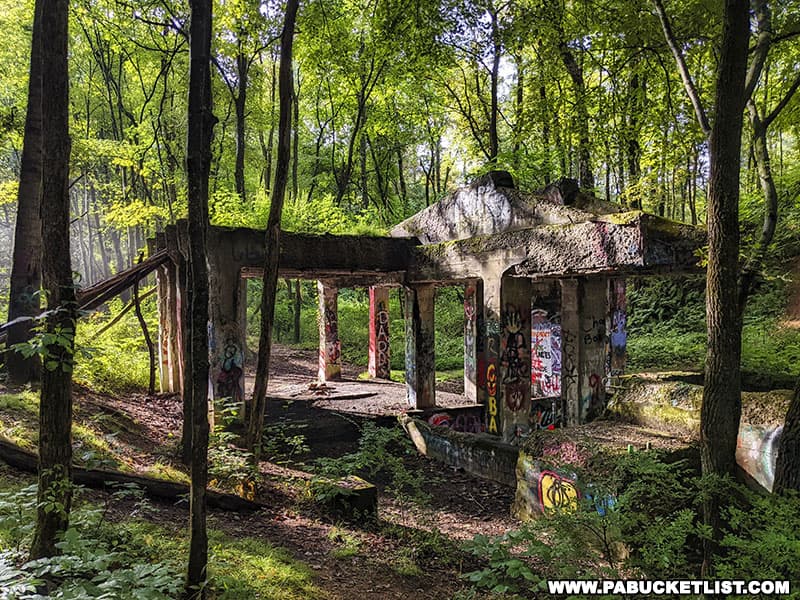
But in the late 1800s, the company town of Scotia, built by one of the richest men in the world at the time, served as home to employees of Andrew Carnegie’s Scotia Mines and Iron Works.
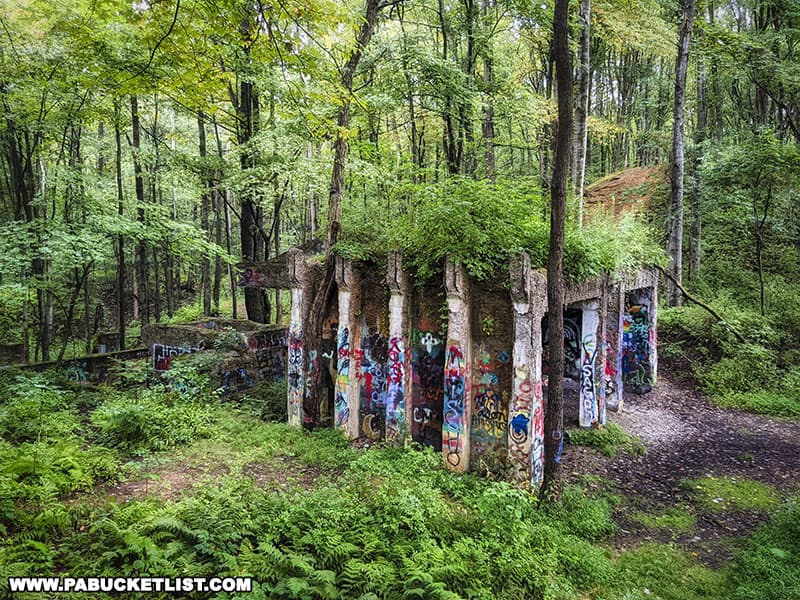
Now, Scotia is but a ghost town (and some say still inhabited by ghosts!), and the few remaining structures are being slowly swallowed up by the Earth.
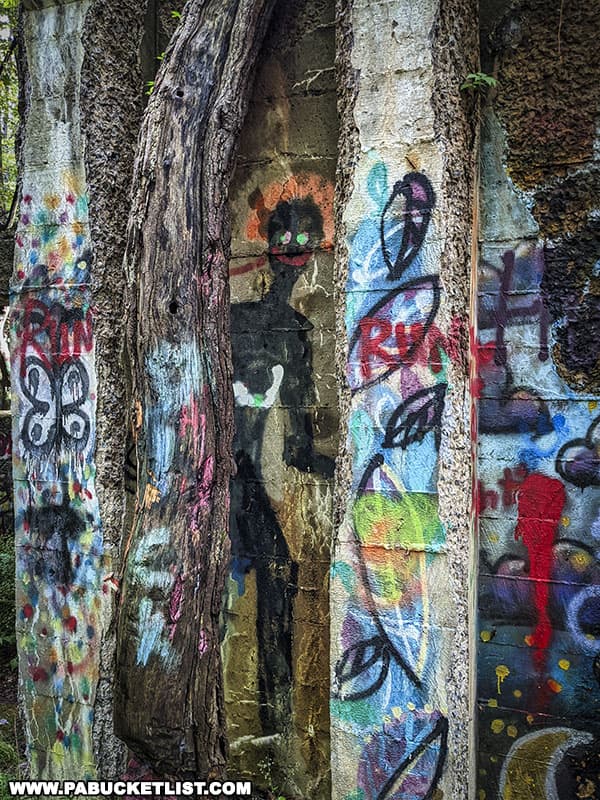
11. Turn Hole Tunnel at Lehigh Gorge State Park
Turn Hole Tunnel is an abandoned railroad tunnel built in 1866 and in use until 1956.
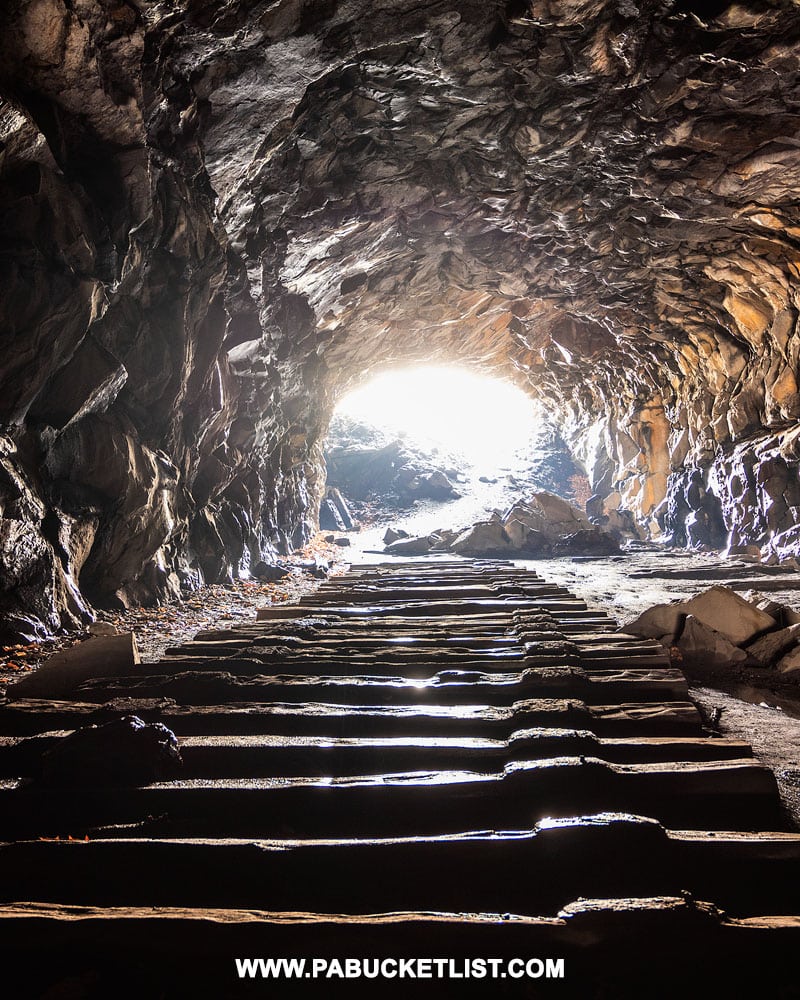
And while the tunnel is still open to park visitors, the popular and nearby Glen Onoko Falls Trail is no longer, closed by the PA Game Commission in 2019 after nearly 150 years of attracting tourists to the Jim Thorpe area.
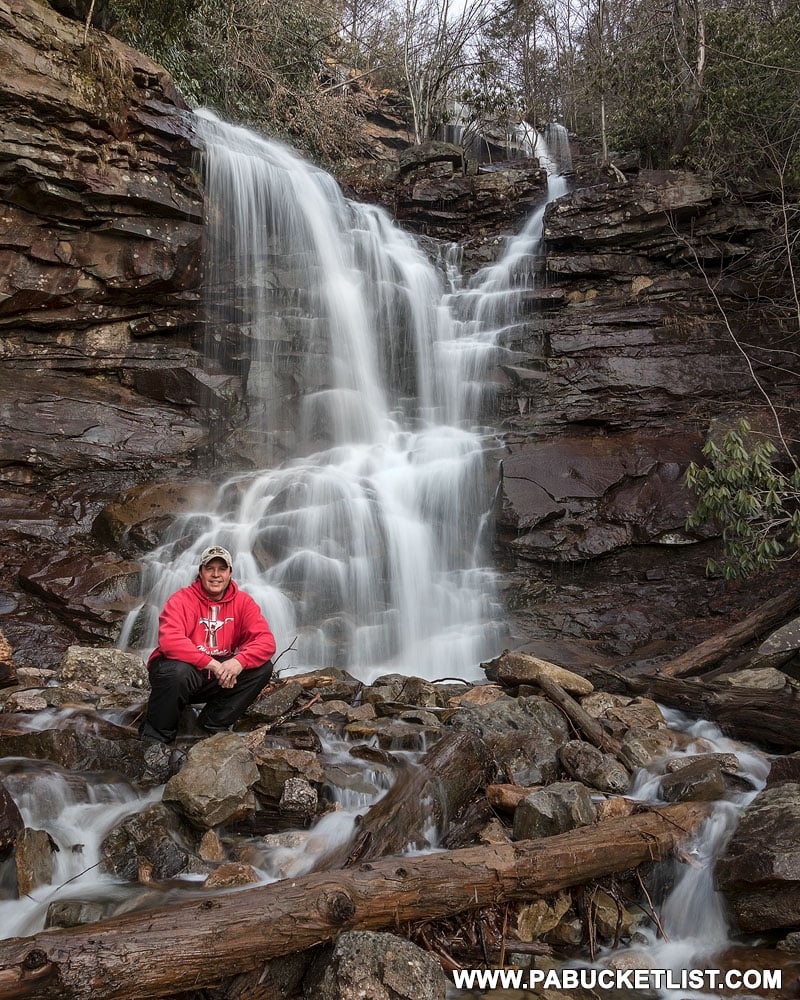
12. The Abandoned Blair Lime Kilns
The abandoned Blair Lime Kilns are remnants of a thriving limestone-processing facility that once operated around the clock in a now-tranquil corner of Blair County.
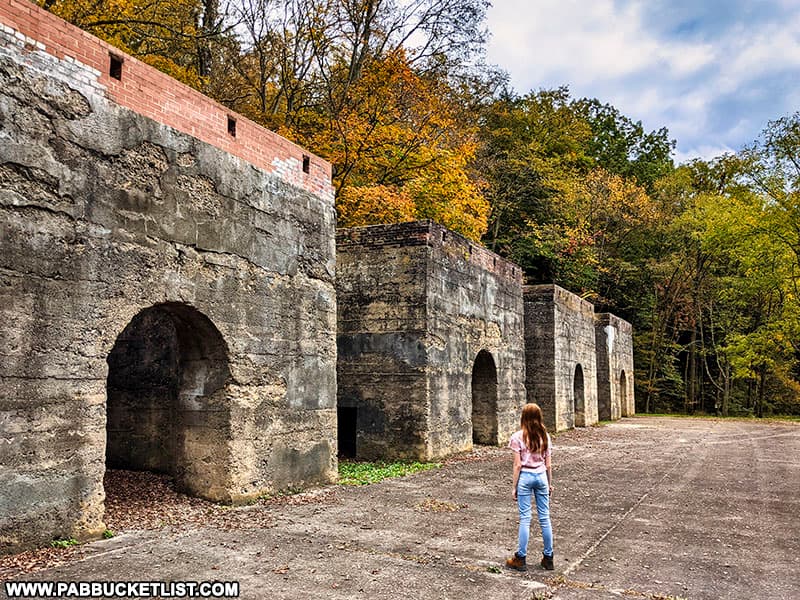
As with many similar operations, once the local limestone was exhausted, the kilns were abandoned, and their remnants are now part of Canoe Creek State Park.
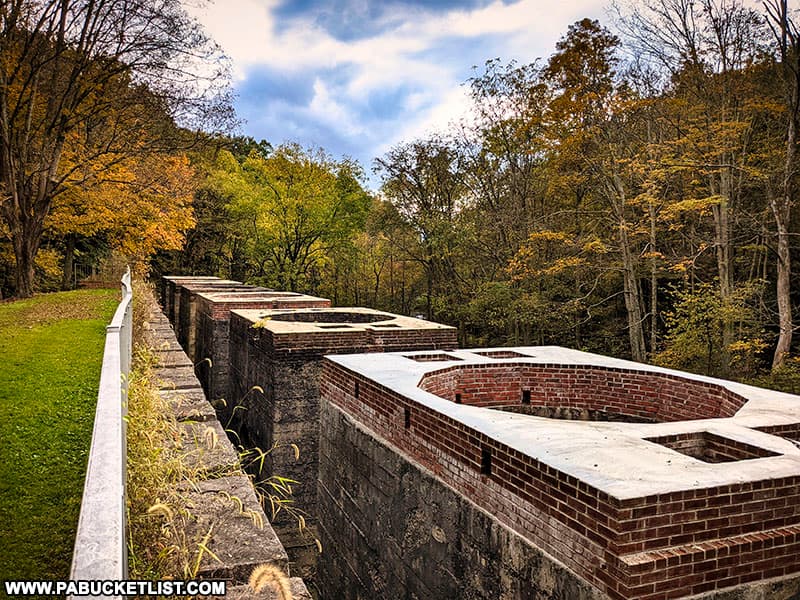
13. The Kinzua Viaduct
The Kinzua Viaduct was once the longest and tallest railway bridge in the entire world!
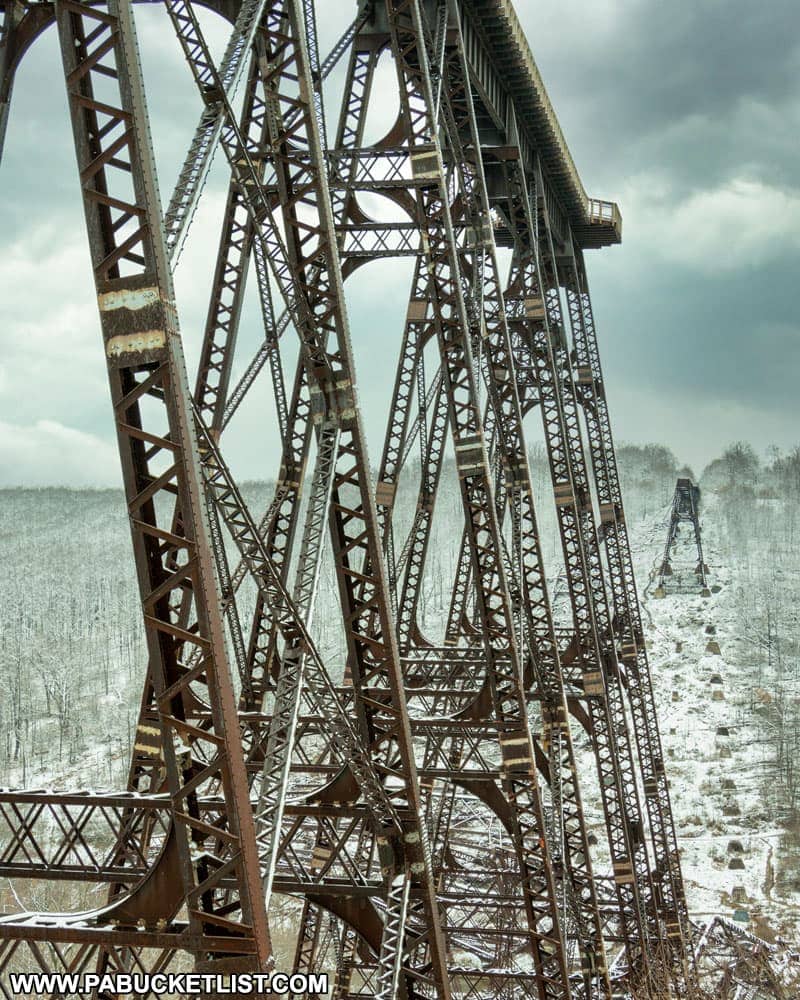
On July 21, 2003 , a tornado struck the bridge, destroying 11 of the 20 support structures.
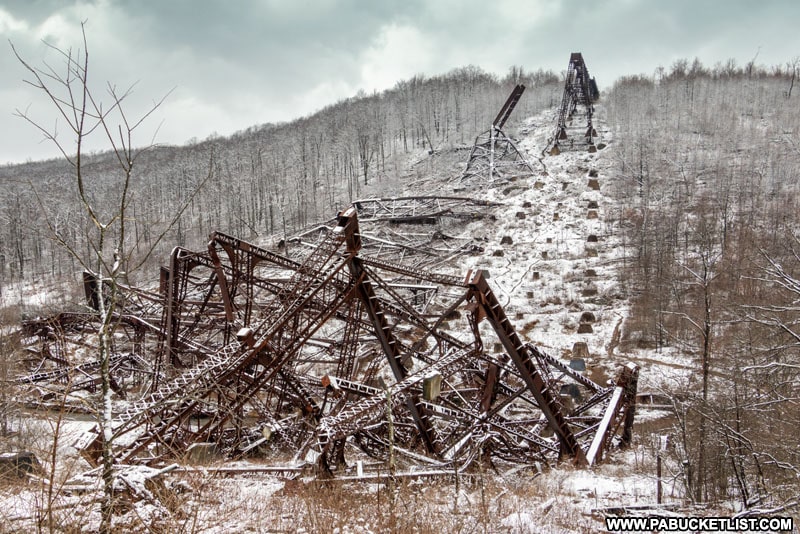
The remains of the Kinzua Viaduct have been resurrected as the Kinzua Skywalk and are part of Kinzua Bridge State Park.
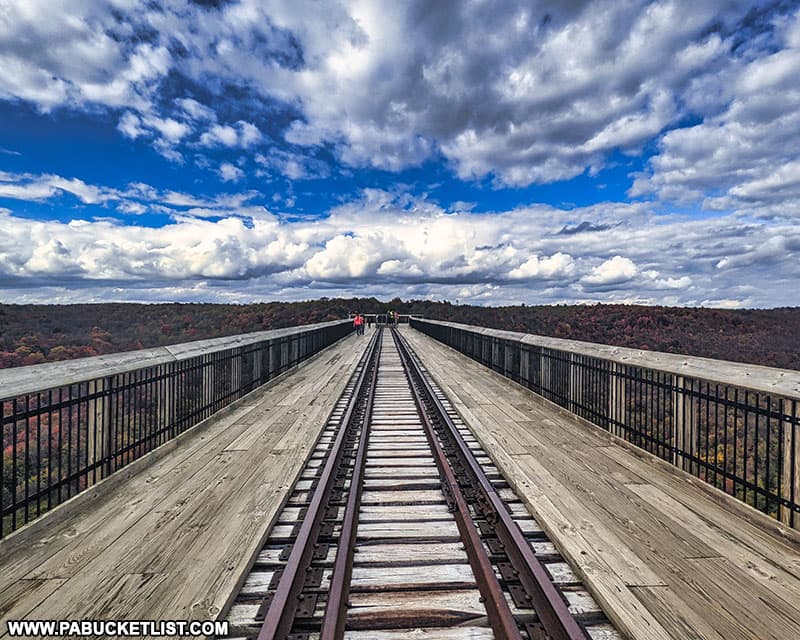
14. The Salisbury Viaduct
Abandoned as a railroad bridge in the mid-Seventies, the Salisbury Viaduct has in more recent times been reborn as part of the Great Allegheny Passage rail trail in western PA.
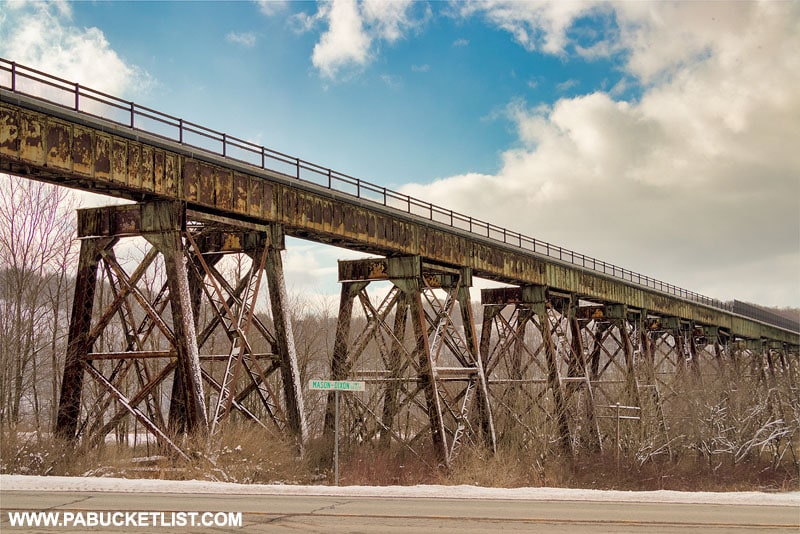
Explorers can hike or bike across this 101 foot-high, 1,908 foot-long former railroad bridge and experience exceptional views of the surrounding countryside.

15. The Big Savage Tunnel
The Big Savage Tunnel, also located in Somerset County, is a formerly abandoned railroad tunnel that has been incorporated into the Great Allegheny Passage rail trail.
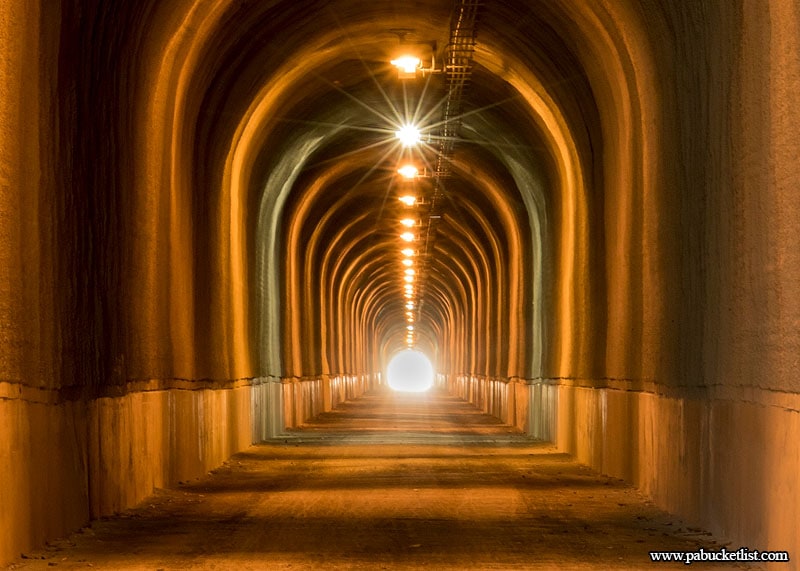
Today you can hike or bike through this 3,294 foot long tunnel which was a critical link in the Western Maryland Railway, until the entire line was abandoned in 1975.
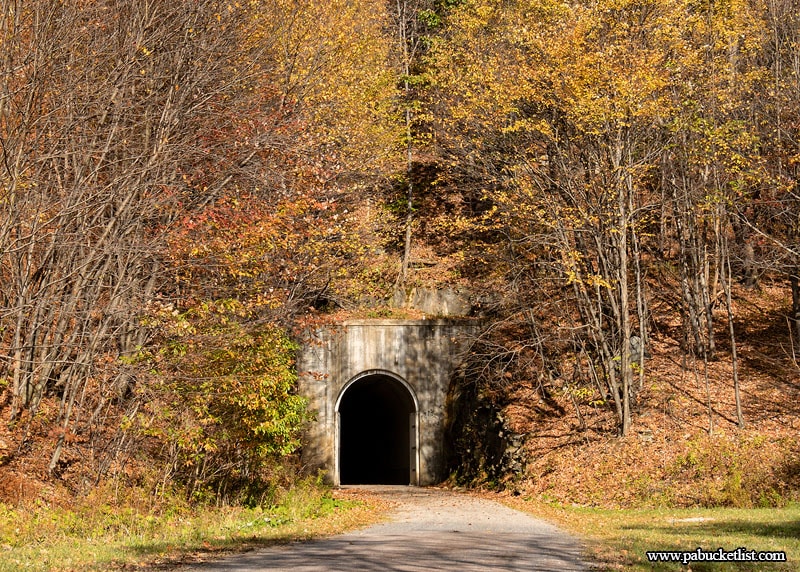
16. Rockland Tunnel
Completed in 1916, the Rockland Tunnel in Venango County was constructed by the Pennsylvania Railroad to expedite the transportation of oil out of the region.
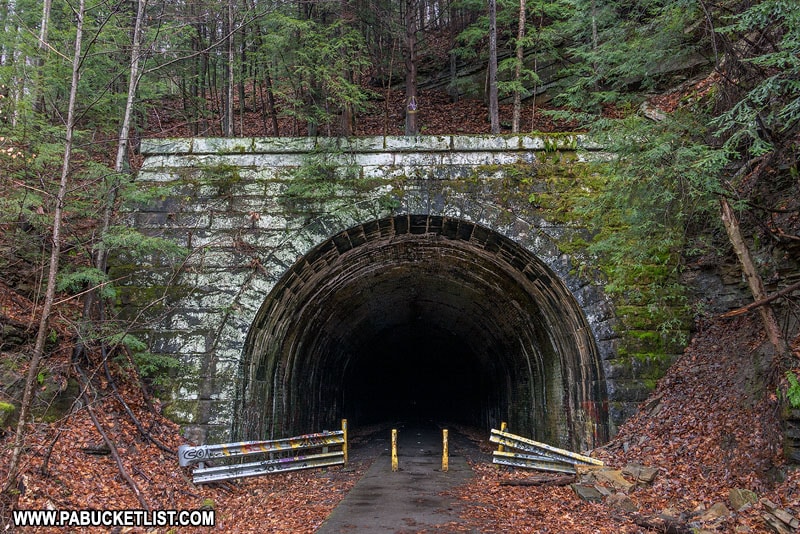
Now part of the Allegheny River Rail Trail, explorers can hike or bike through this unlit, 2,868 foot-long tunnel.
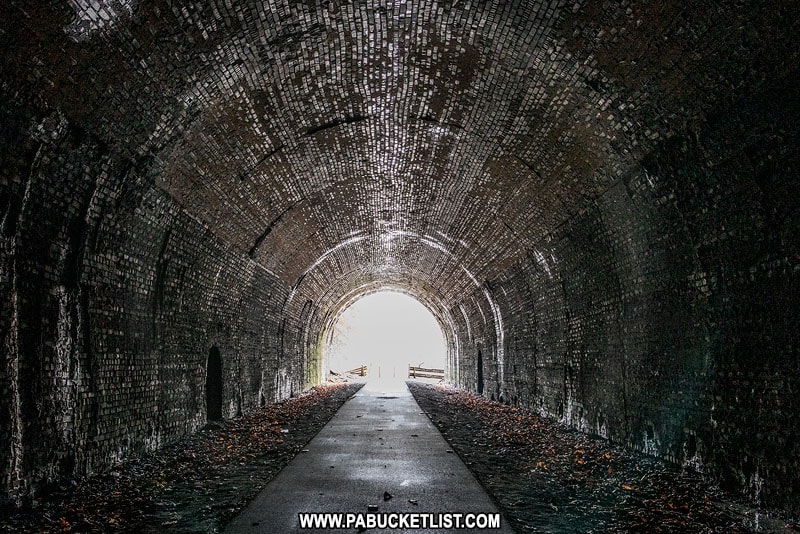
17. Rockland Furnace
Rockland Furnace, located just minutes from the Rockland Tunnel, was used to produce iron ore starting in 1832, before being abandoned in 1854.
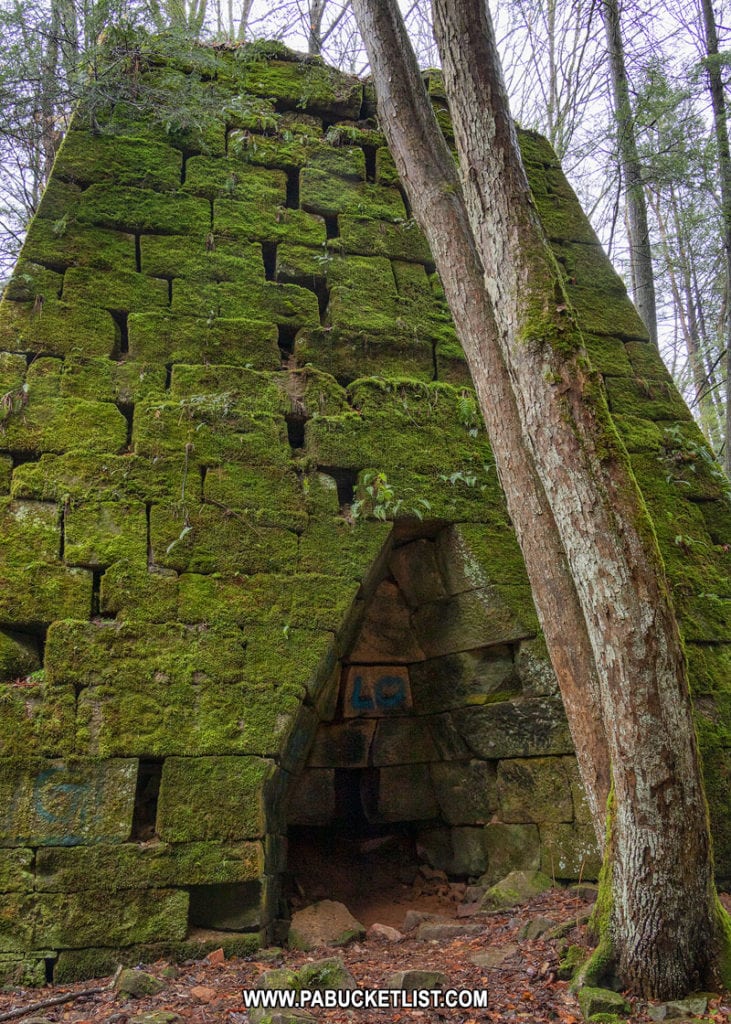
Rockland Furnace was powered by a dam and water wheel on Shull Run, where today you’ll find the beautiful Freedom Falls.
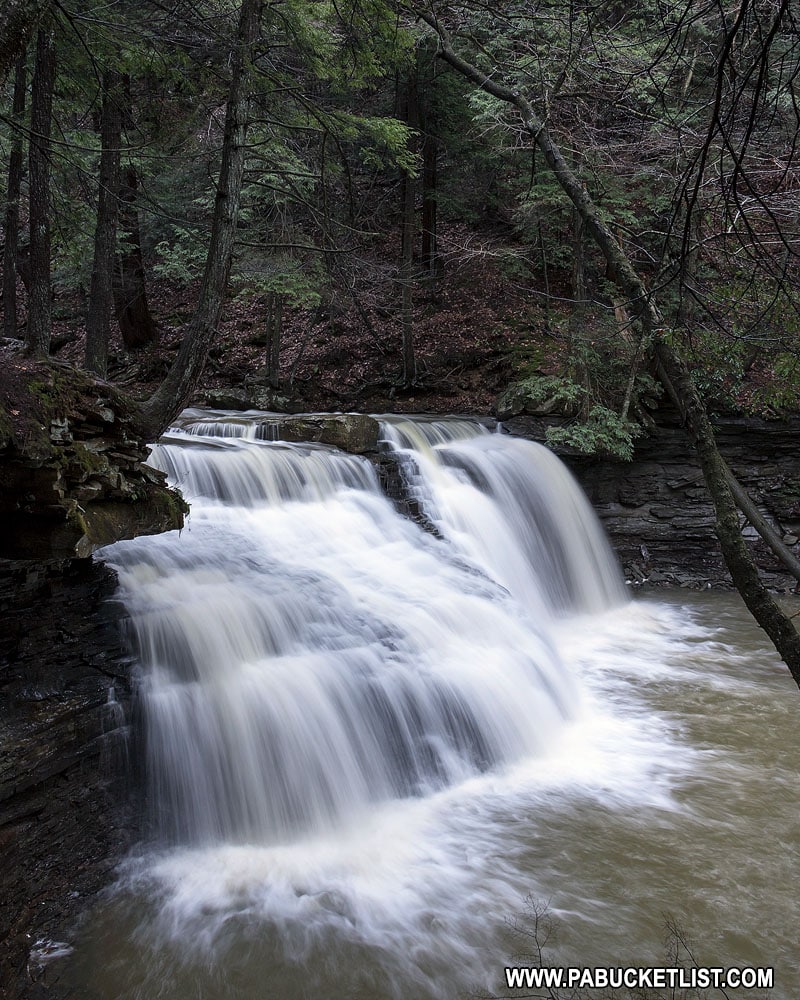
18. Greenwood Furnace
From 1834 to 1904, the furnaces of Greenwood in Huntingdon County produced charcoal-fired iron in great abundance, and a thriving company town that included nearly 130 buildings evolved around that industry.
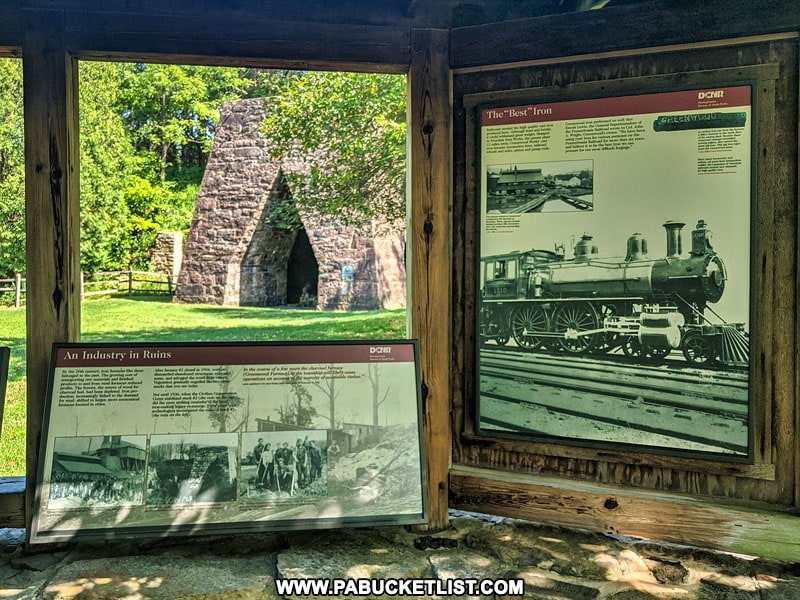
Today, the ghost town of Greenwood and the abandoned remains of the furnaces are part of the larger Greenwood Furnace State Park.
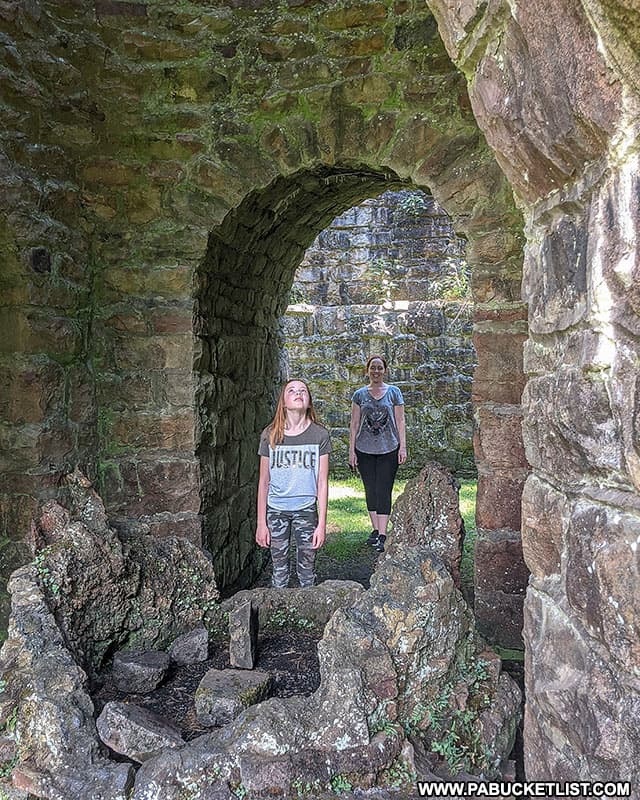
19. The Abandoned Cresson State Prison
The Abandoned Cresson State Prison in Cambria County began as a tuberculosis sanatorium when it opened in 1913 and morphed over the years into a state hospital and finally a state prison.
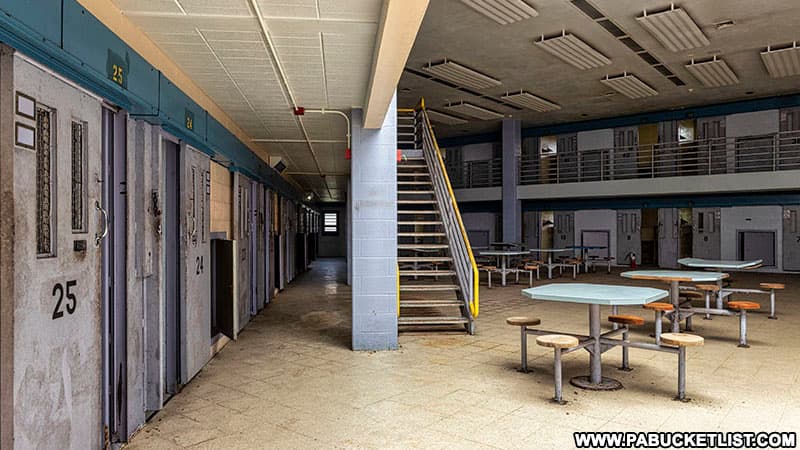
Today you can schedule a legal visit to the former SCI-Cresson through Hydroponic Life – the company than now occupies the grounds.
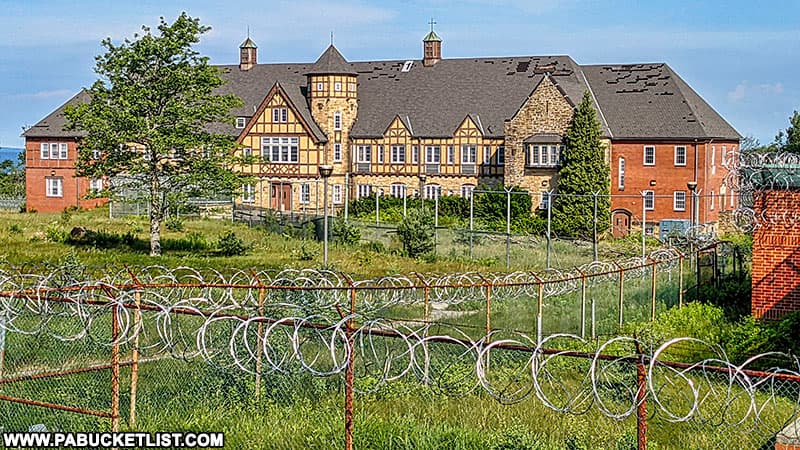
This site is so massive, I dedicated an entire second article to the subject, which focuses more on the Cresson Sanatorium days of the complex.
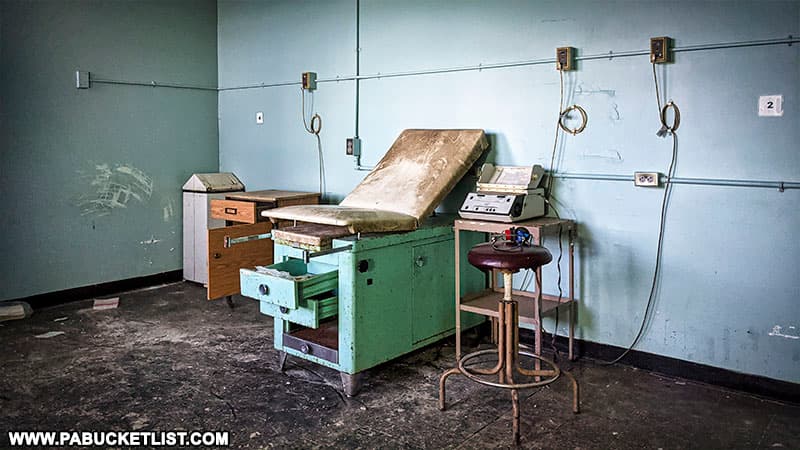
Unfortunately, as of the summer of 2023, a legal battle is playing out in the courts between Big House Produce, the hydroponic farmers who also operate the tours of the grounds, and the landlord of the property.
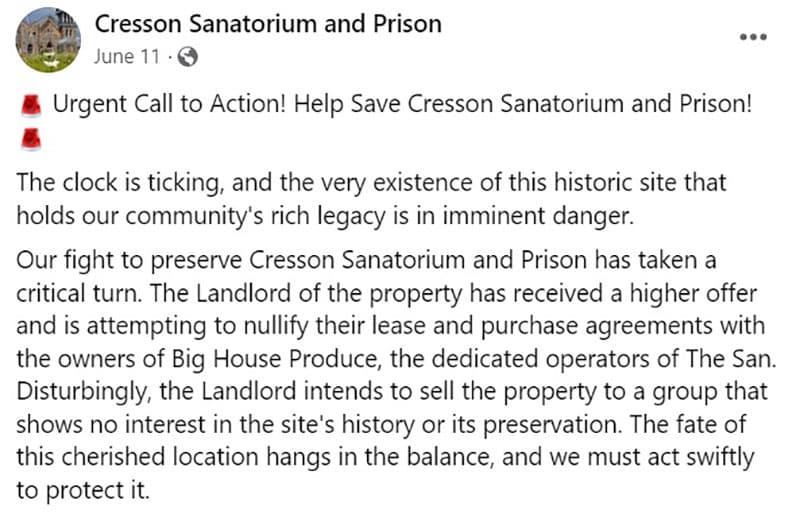
Which means at least for now, all tours of the former Cresson Sanatorium are on hold (I’ll remove these paragraphs if the legal matters are sorted out and tours resume).
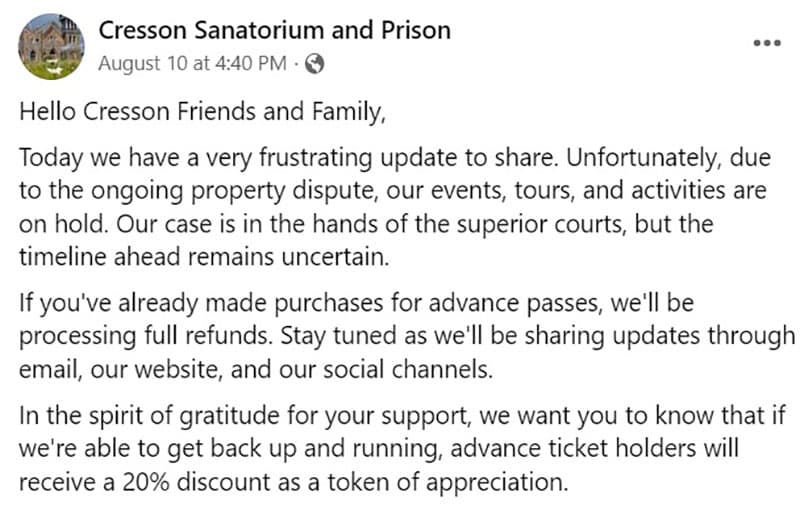
20. The Abandoned POW Camp in Cumberland County
Did you know that during World War Two, German and Japanese prisoners of war were housed and interrogated at a secret camp near what is now Pine Grove Furnace State Park in Cumberland County?!
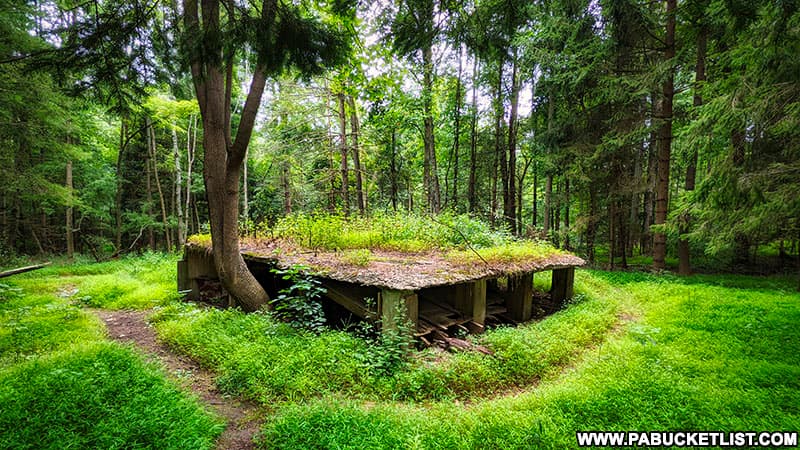
The Pine Grove Furnace POW Camp, as it was known at the time, was classified as “secret” and no civilians worked there or were allowed to have knowledge of the camp.
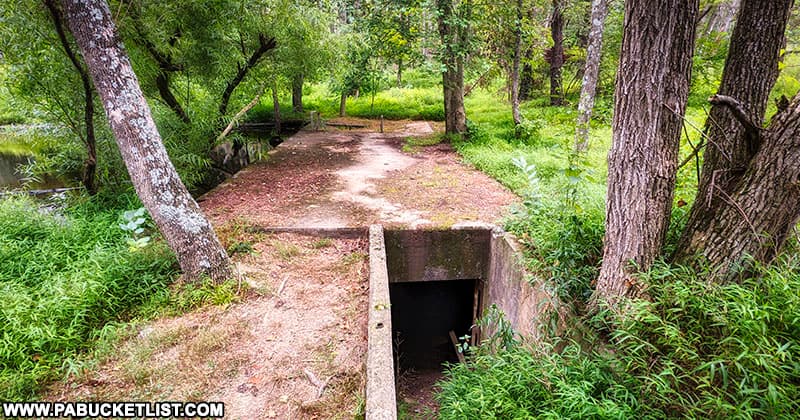
Today, the abandoned ruins of the former Pine Grove Furnace POW Camp are located in the Michaux State Forest.
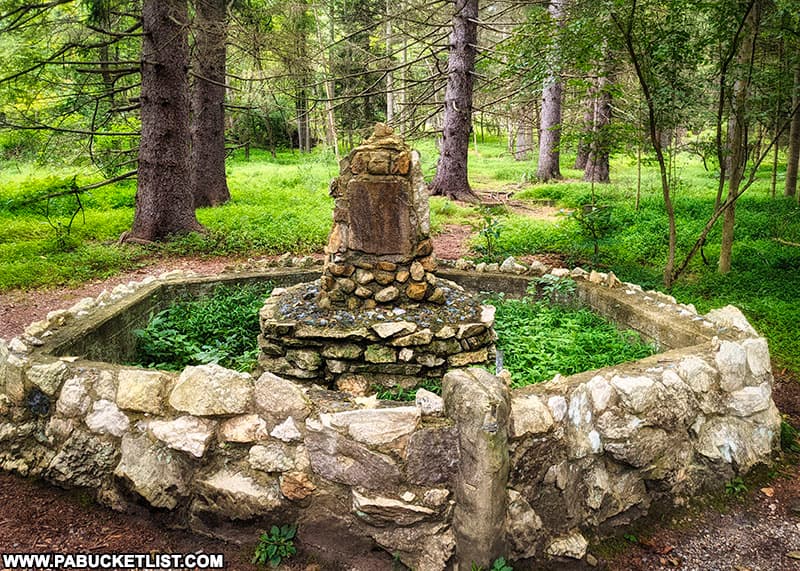
21. The Haunted Quaker Church in Fayette County
The “Haunted Quaker Church” in Fayette County is actually a stone chapel built in 1895 on the site of an even older, abandoned Quaker meeting house that dated back to 1793.
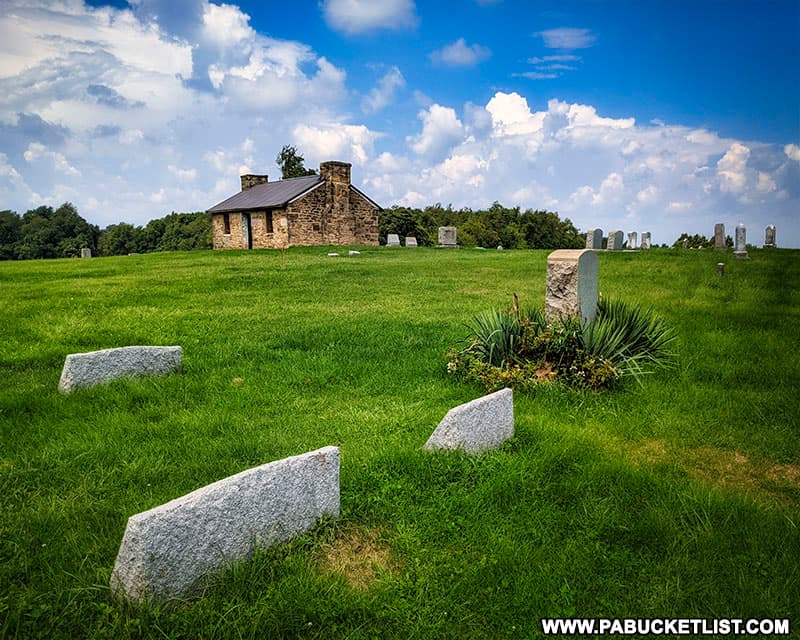
The cemetery around the stone chapel contains more than 500 graves (many unmarked as was Quaker tradition), and rumours exist to this day (most likely urban legends) that the Quaker meeting house was the site of a secret witch trial, execution, and subsequent haunting!
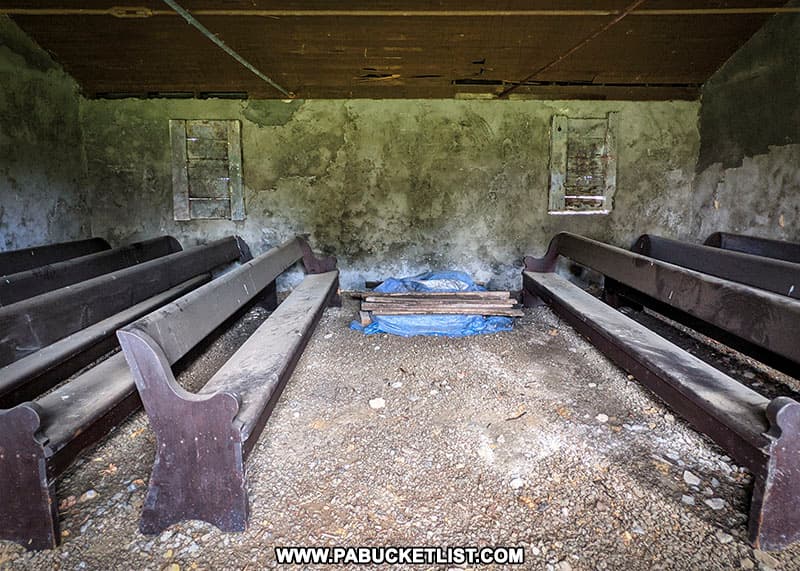
The rumors persist in part due to the “ghostly image” which is apparent on a boarded-up back window of the chapel.
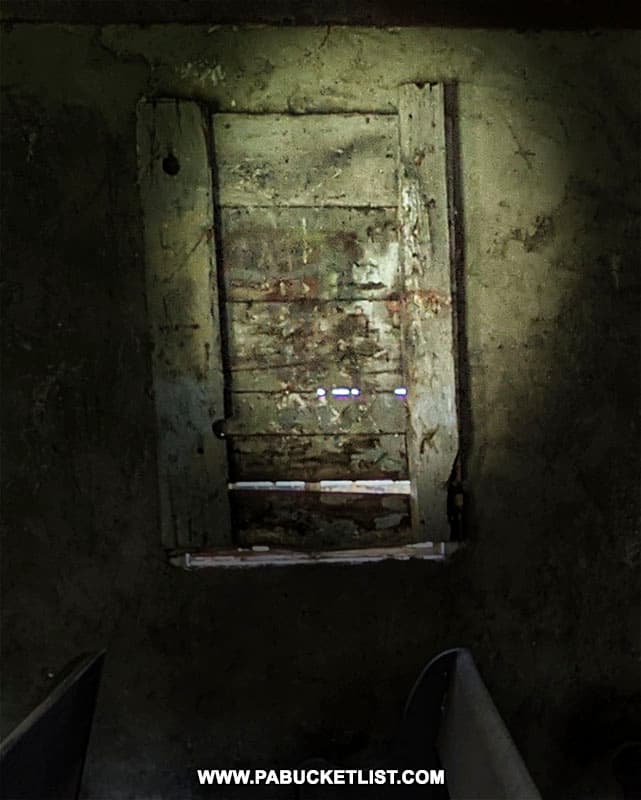
22. The Abandoned Fountain of Youth Near Pittsburgh
The Fountain of Youth really does exist, and you can find it in a public park just north of Pittsburgh!
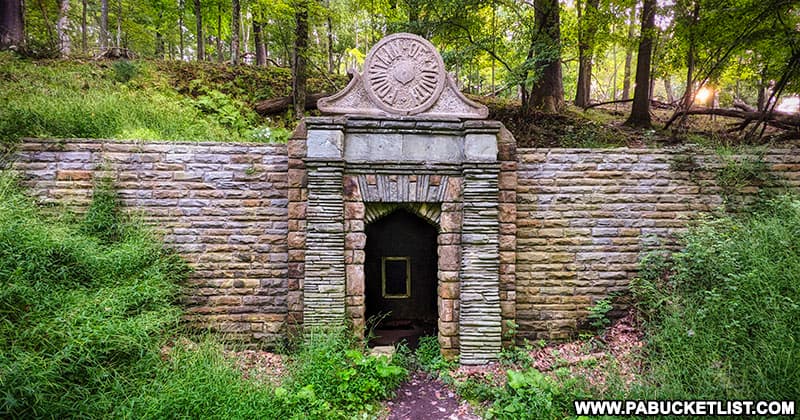
This 1930s-era roadside attraction now sits abandoned in North Park in Allegheny County, but was once a public source of water (and dreams of eternal youth) until that water was deemed unfit for human consumption in 1955.
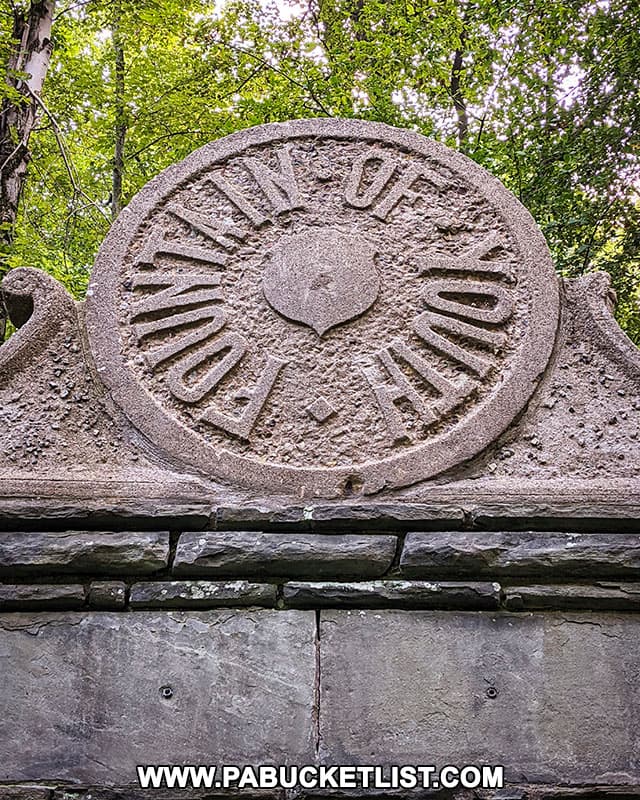
Today, you can find the neglected remnants of the Fountain of Youth along Kummer Road near Wexford.
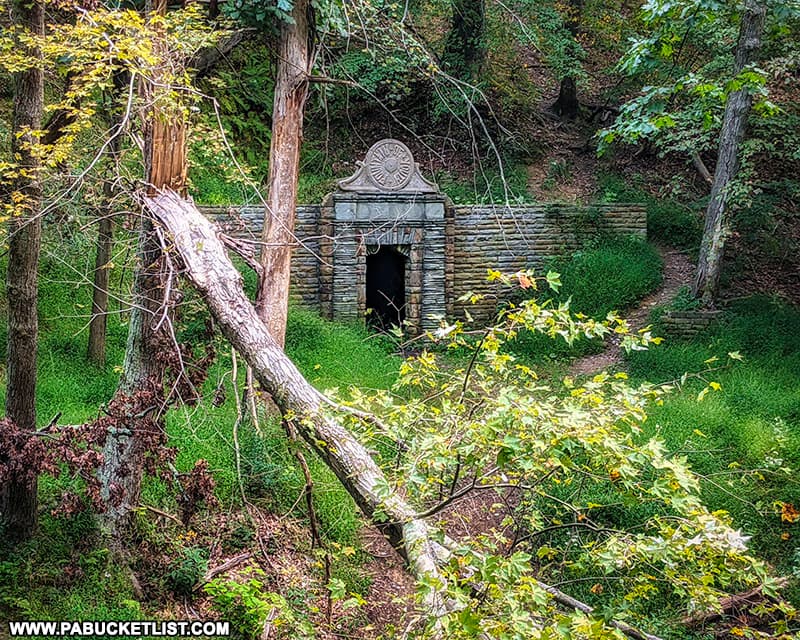
23. The Abandoned Sideling Hill POW Camp
The abandoned Sideling Hill POW Camp in Fulton County was used to house German prisoners of war after the Nazis surrendered in May, 1945.
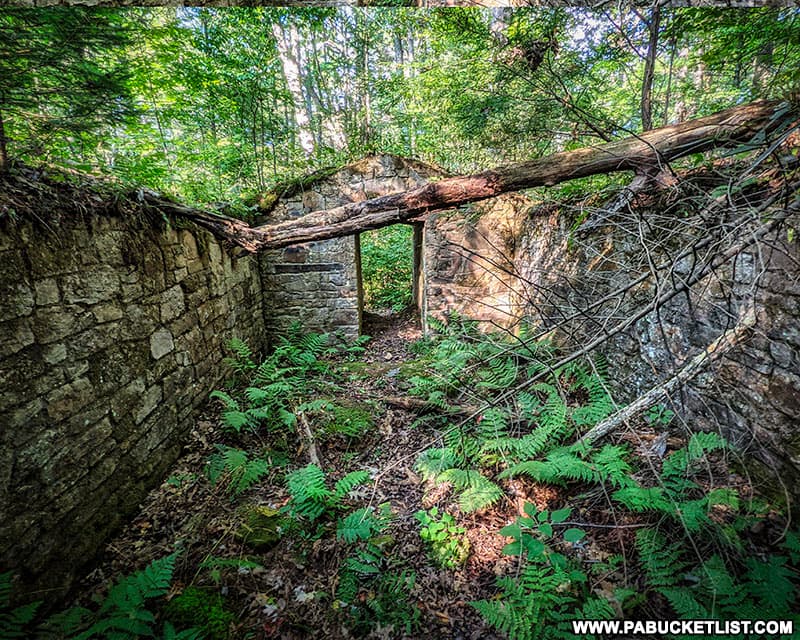
Today you’ll find the abandoned ruins of the Sideling Hill POW Camp in the Buchanan State Forest.
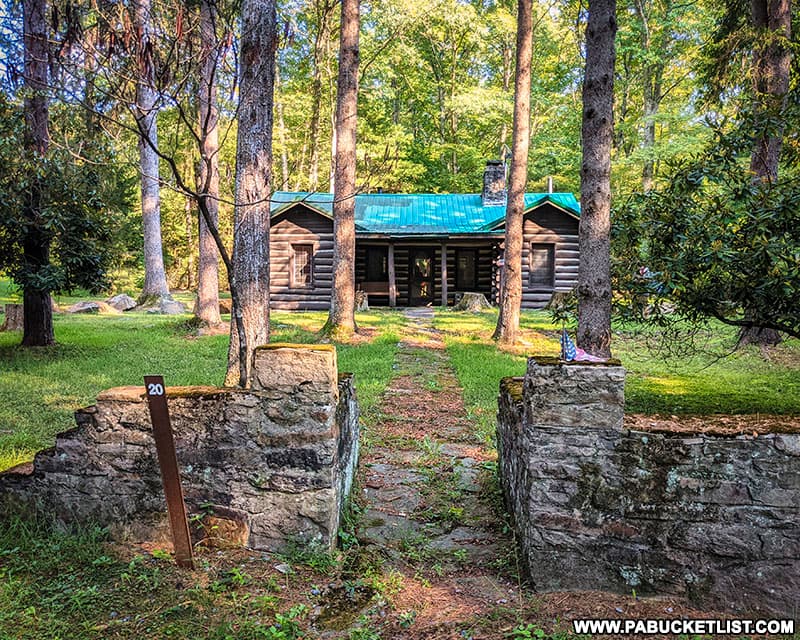
24. The Abandoned South Penn Railroad Aqueduct
The abandoned South Penn Railroad Aqueduct in Fulton County is a perfectly-preserved remnant of a railroad that never was.
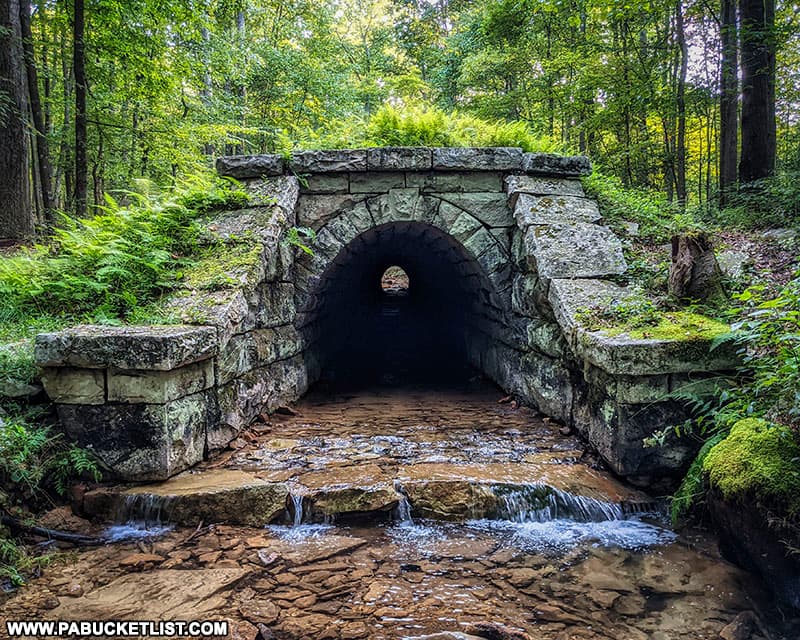
Built in 1883 by Sicilian stone masons for a railroad that was never completed, the abandoned South Penn Railroad Aqueduct can be found in the present-day Buchanan State Forest.
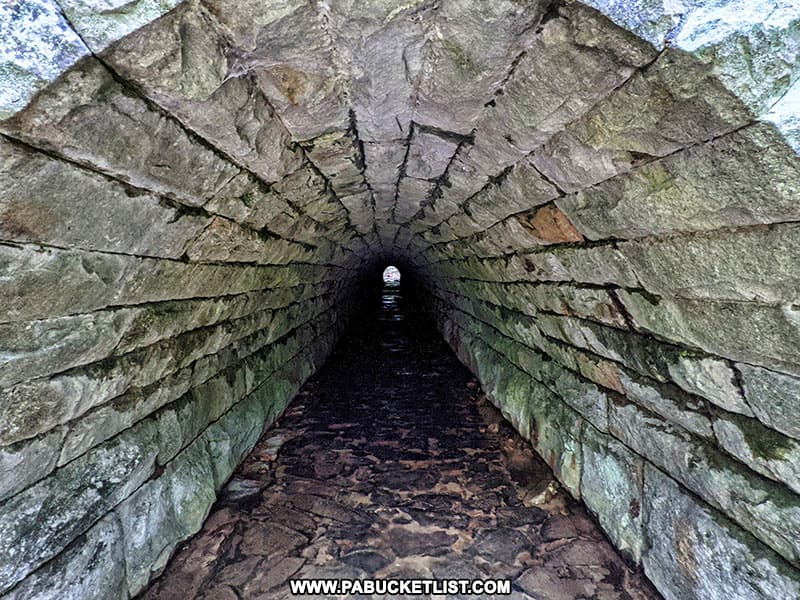
25. The Abandoned Hunting Lodge at Linn Run State Park
The abandoned hunting lodge at Linn Run State Park is a remarkable set of ruins from the early days of “retreat camping” in western Pennsylvania.
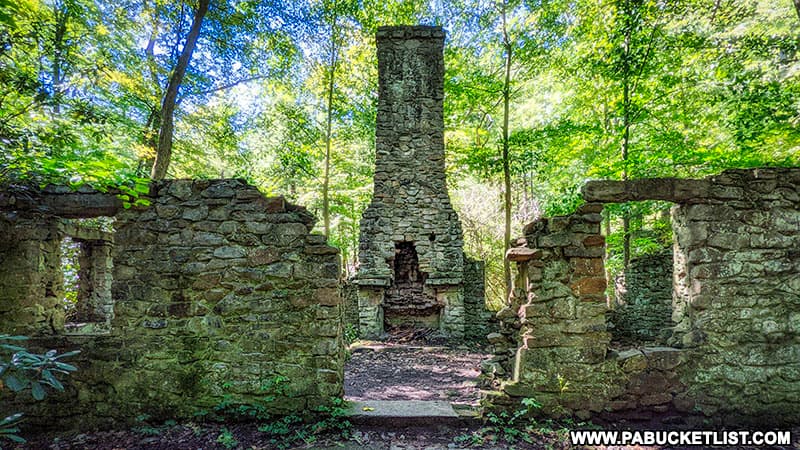
Built in 1922, the McGinnis Rod and Gun Club existed for roughly 20 years before the building was consumed by fire, leaving only the stone walls and fireplace you see today.
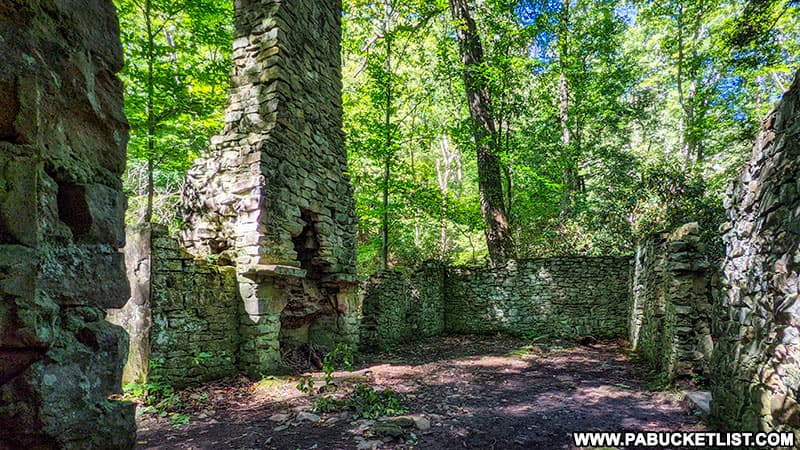
26. The Abandoned Ski Resort at Denton Hill State Park
The abandoned ski resort at Denton Hill State Park in Potter County is a case study in dystopian beauty.
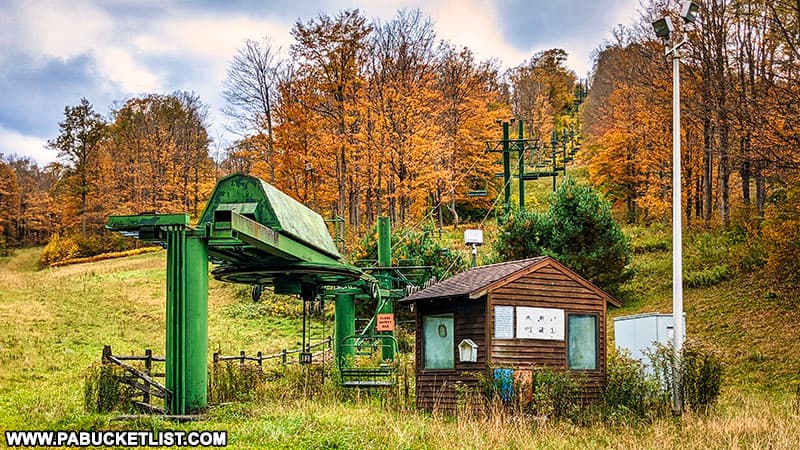
Last operated in 2014, the ski resort is closed, but the state park is still very much open to visitors.
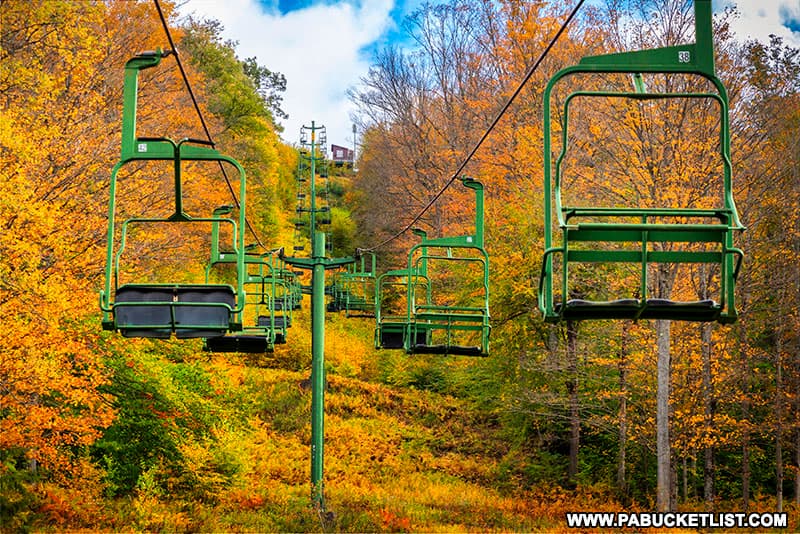
Will the abandoned ski resort at Denton Hill State Park ever reopen, or will it remain a rusty tribute to days gone by?
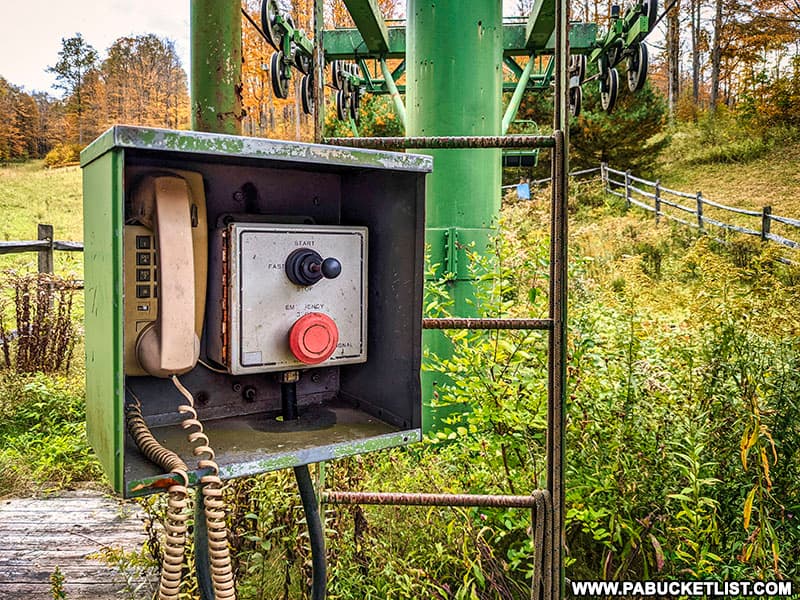
27. The Abandoned Rockport Road Tunnel at Lehigh Gorge State Park
Rockport Road Tunnel is an abandoned tunnel located near the Rockport access to Lehigh Gorge State Park.
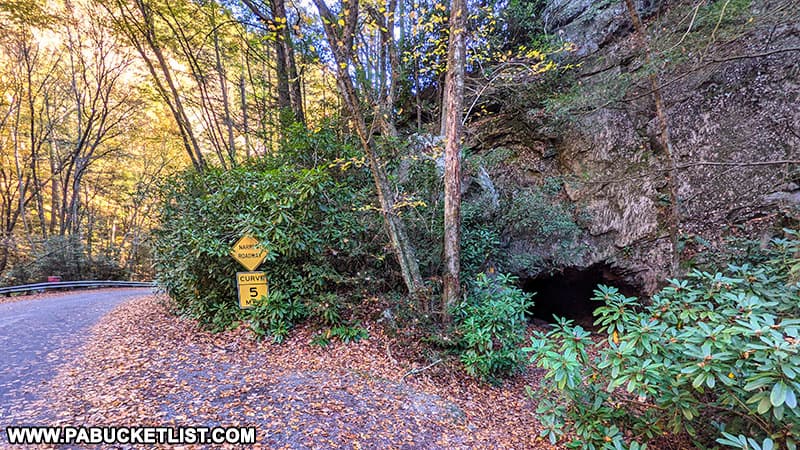
You’ll find this tunnel near the Rockport Access parking area (see map below) at GPS coordinates 40.96631, -75.75677.
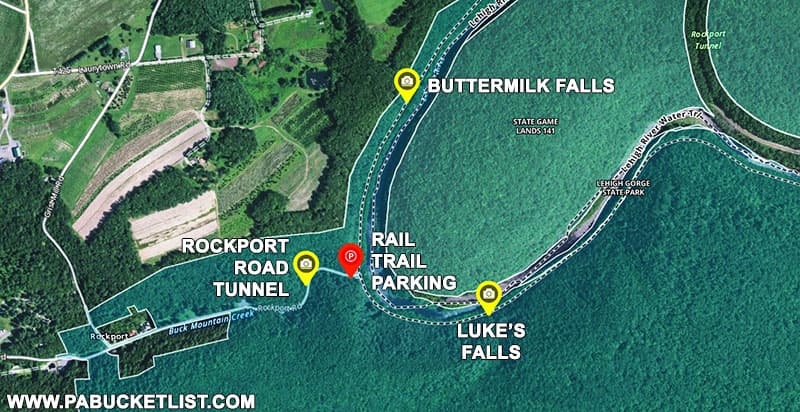
The tunnel is fairly short (you can see one end from the other), but quite low in the center, and I had to hunch down quite a bit to get through to the far side.
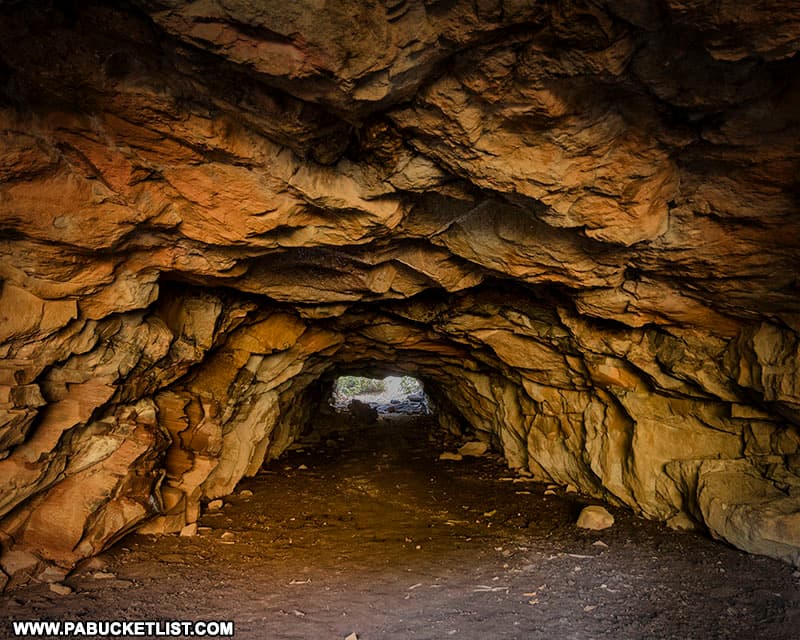
When you emerge on the eastern side you have a clear view down to the Rockport Access parking area, the Lehigh Gorge rail trail, and the Lehigh River.
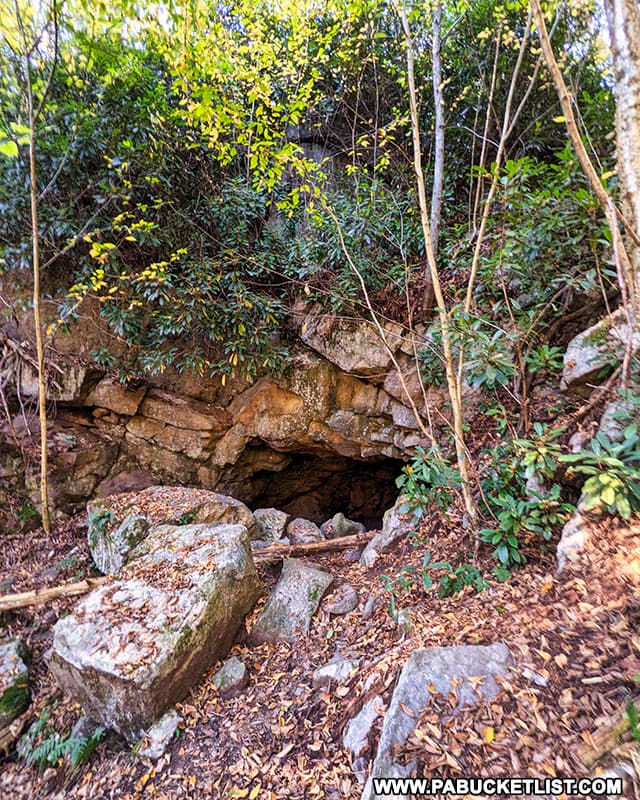
28. The Hidden Ruins at Raystown Lake
Exploring Hidden Ruins at Raystown Lake is your guide to discovering the abandoned ruins of roads, bridges, and homes of historical significance, hidden around and beneath the surface of Raystown Lake.
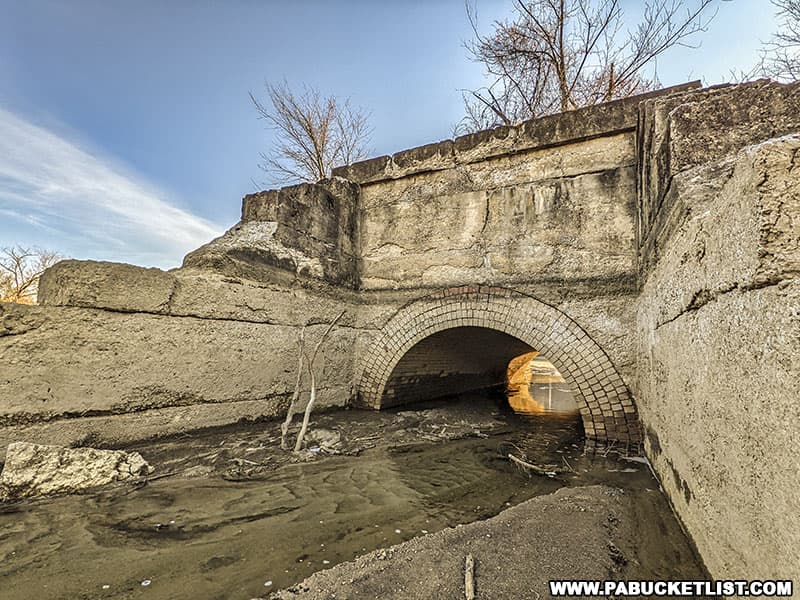
As the vegetation dies back and the waters of Raystown Lake are drawn down each winter, this allows for a glimpse at some magnificent hidden ruins not normally visible the rest of the year.
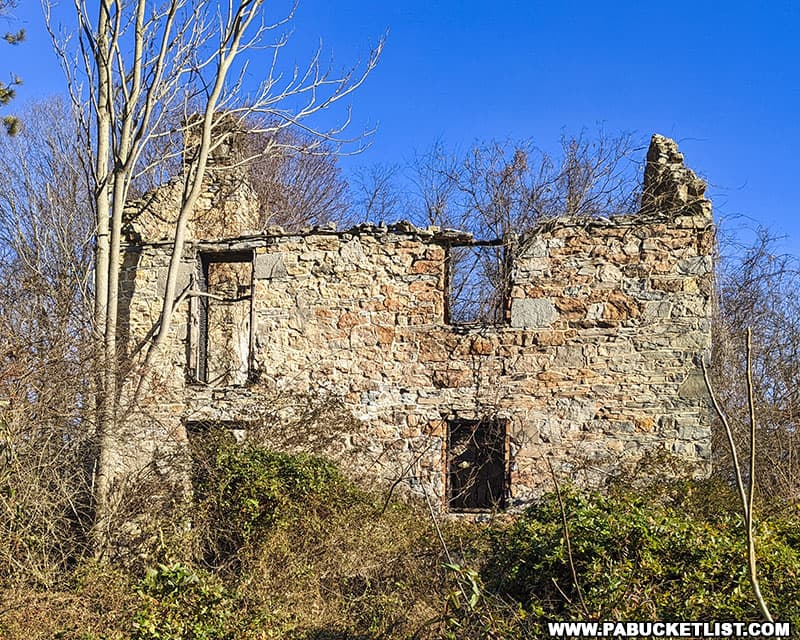
29. The Abandoned Westinghouse Atom Smasher
The abandoned Westinghouse Atom Smasher is an iconic relic from the very dawn of the atomic age in the United States.
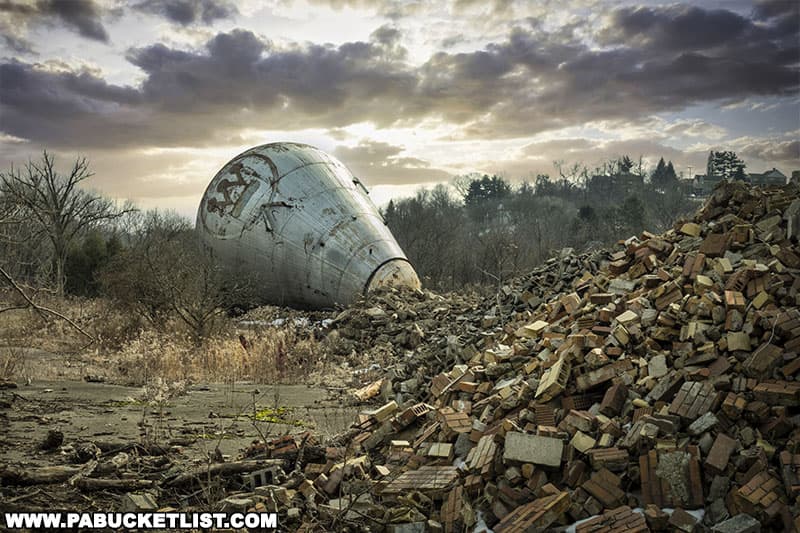
For almost 80 years, the Westinghouse Atom Smasher was a landmark in Forest Hills, a suburb of Pittsburgh roughly 10 miles east of downtown, and it was instrumental in the pioneering work leading to the development of nuclear power in the United States.
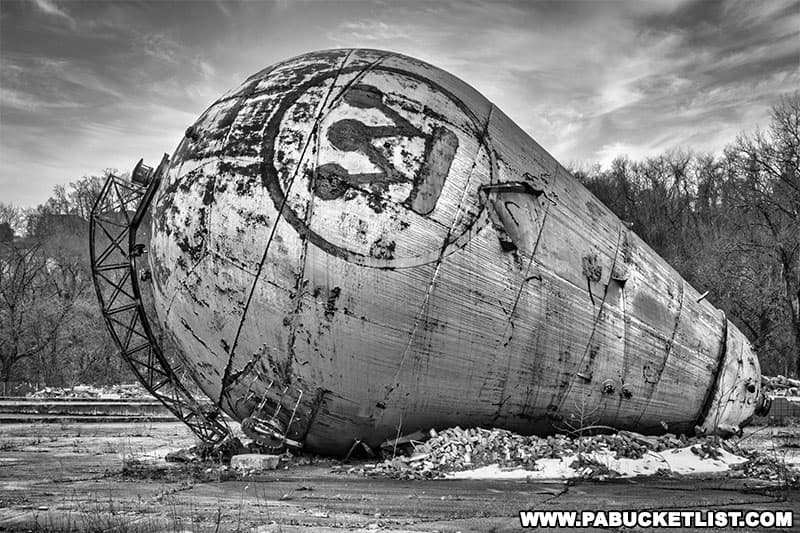
30. The Carrie Blast Furnaces in Pittsburgh
The Carrie Blast Furnaces were in operation from 1884 until 1982, turning iron ore into purified, molten iron which was then used as an ingredient in the steel-making process.
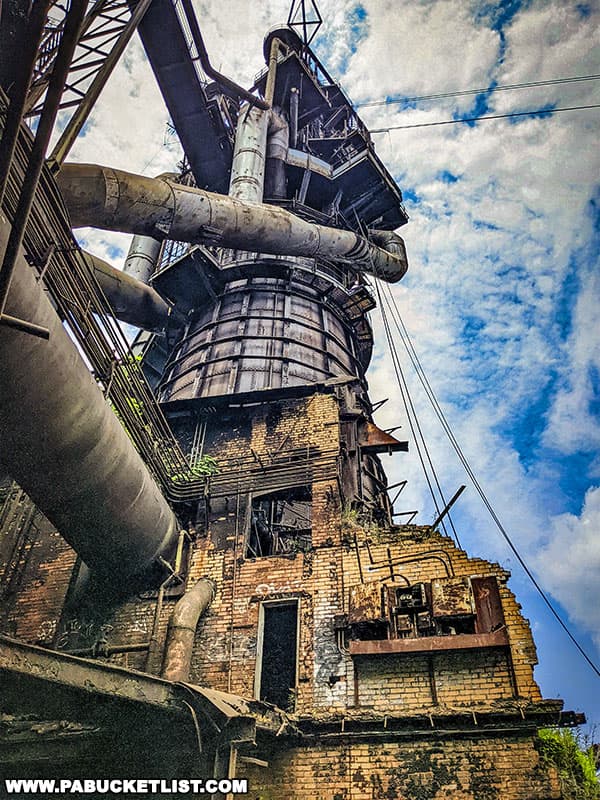
When the furnaces were closed in 1982, large swaths of the site met the wrecking ball.
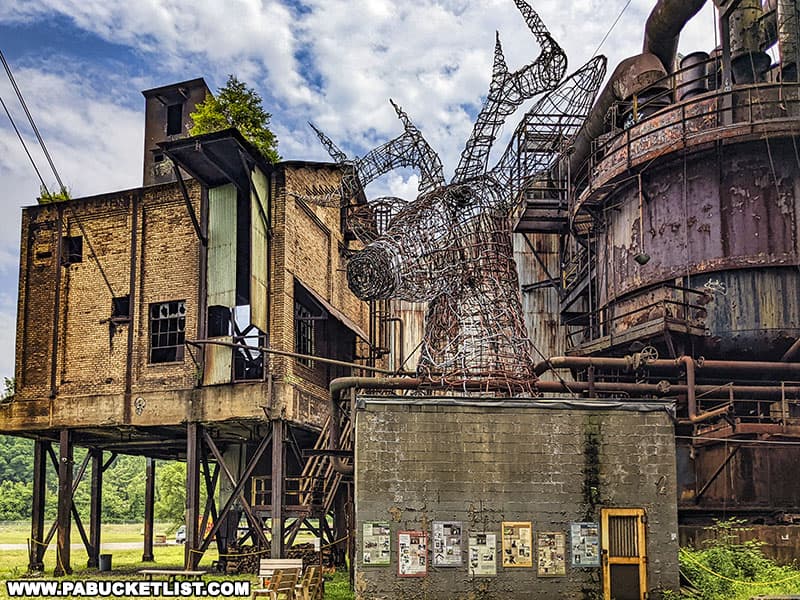
Today the Rivers of Steel nonprofit group puts on tours, workshops, exhibitions, and festivals at the Carrie Blast Furnaces, to promote tourism and economic development in the region, as well as preserving the site itself.
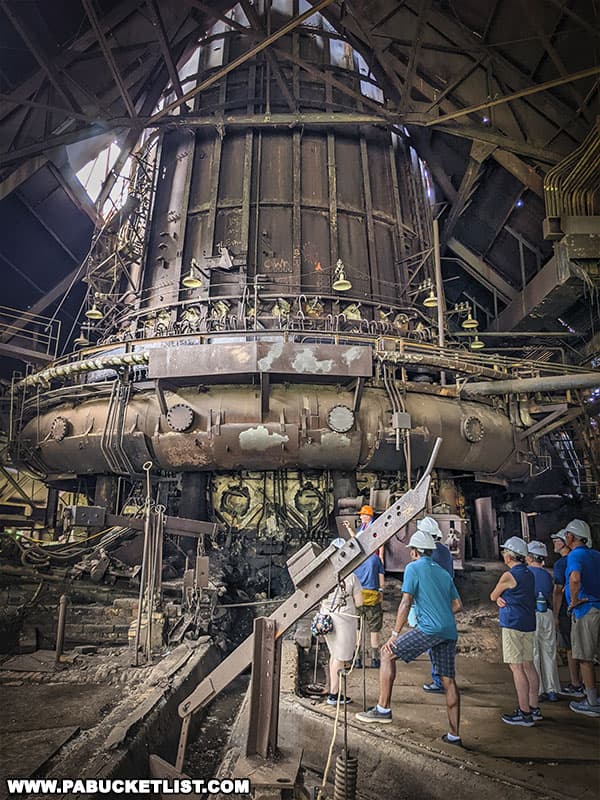
31. Eastern State Penitentiary
Eastern State Penitentiary in Philadelphia is America’s most-historic (and some say most-haunted) prison!
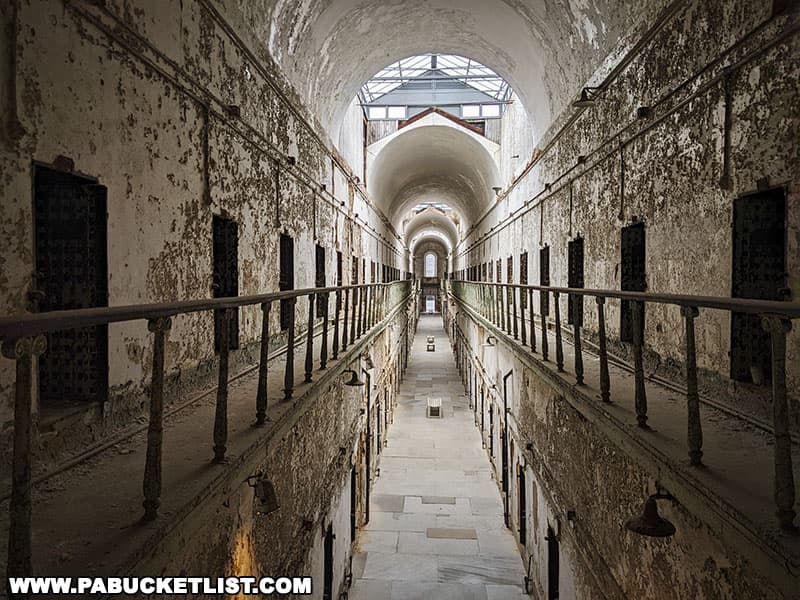
Known for its grand architecture and strict discipline, Eastern State Penitentiary was the most famous and expensive prison in the world when it opened in 1829.
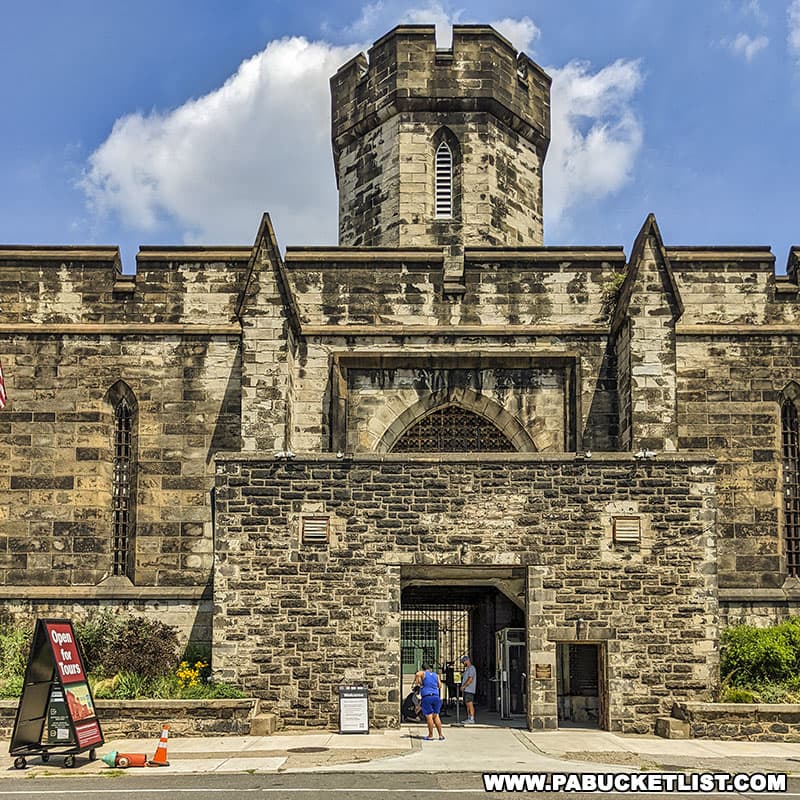
Abandoned in 1971, saved from the wrecking ball, and now owned by a non-profit organization, Eastern State Penitentiary operates as a year-round museum and historic site.

32. The Abandoned Coburn Railroad Tunnel
The abandoned Coburn railroad tunnel was constructed as part of the Lewisburg, Centre and Spruce Creek Railroad in the 1870s, and remained in service for nearly 100 years, until it was officially abandoned by the Penn Central Railroad in 1970.

The tunnel is roughly 260 feet long, and other than the eastern portal, is completely unlined.
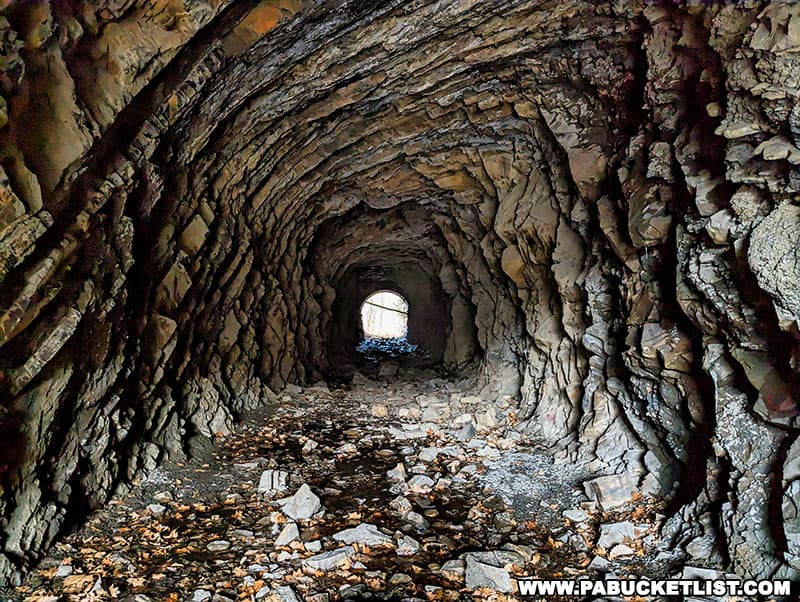
Today, the Coburn Tunnel sits abandoned, but is still passable to foot traffic nearly 150 years after it was first dug.
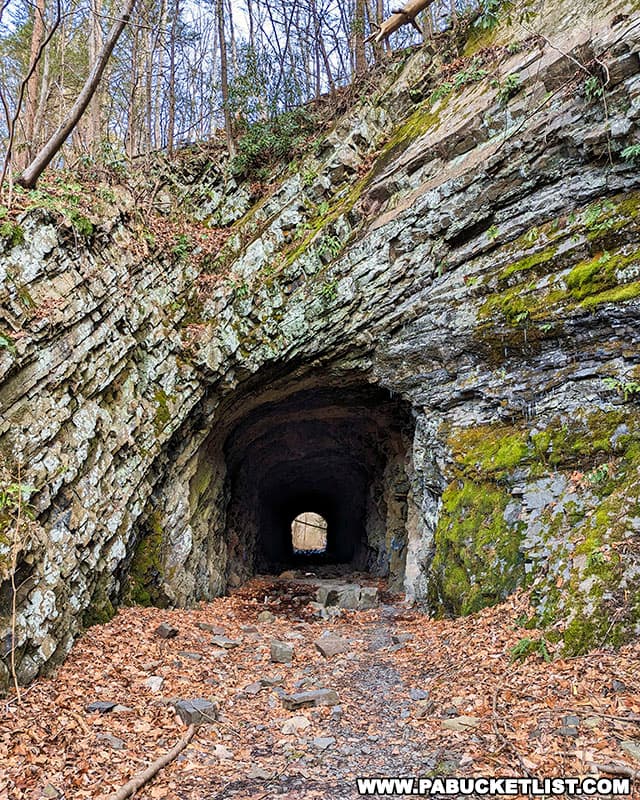
33. The Abandoned Lake Leigh Dam at Ricketts Glen
The abandoned Lake Leigh Dam at Ricketts Glen State Park is a towering remnant of an ill-fated hydroelectric project that thankfully failed!
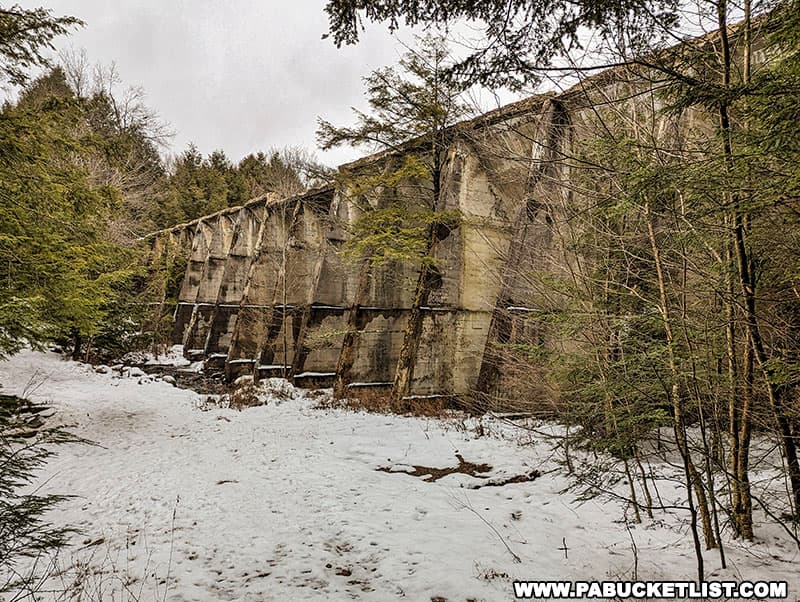
Had the project been successful, it would have fundamentally changed the character of an area that became one on Pennsylvania’s most spectacular state parks.
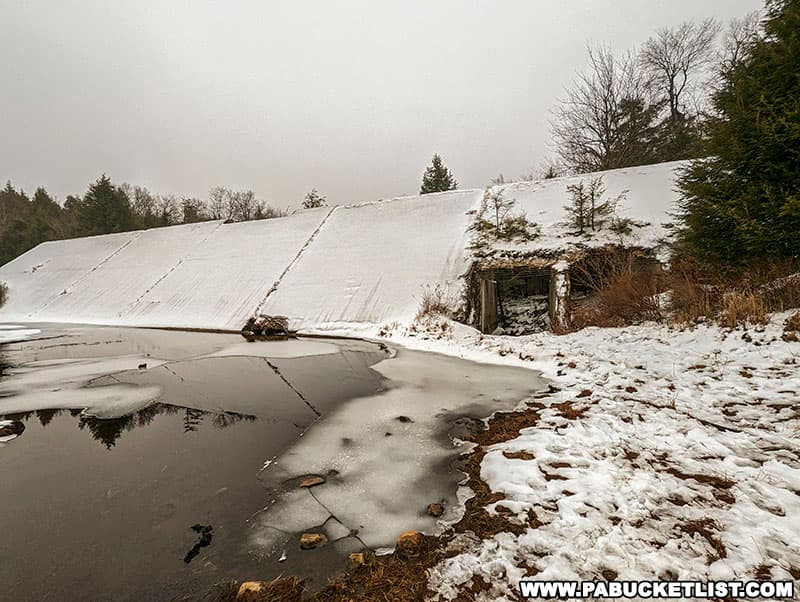
Today the Lake Leigh Dam is slowly being reclaimed by Nature, but the abandoned ruins are still easily visible more that 100 years after they were first constructed.
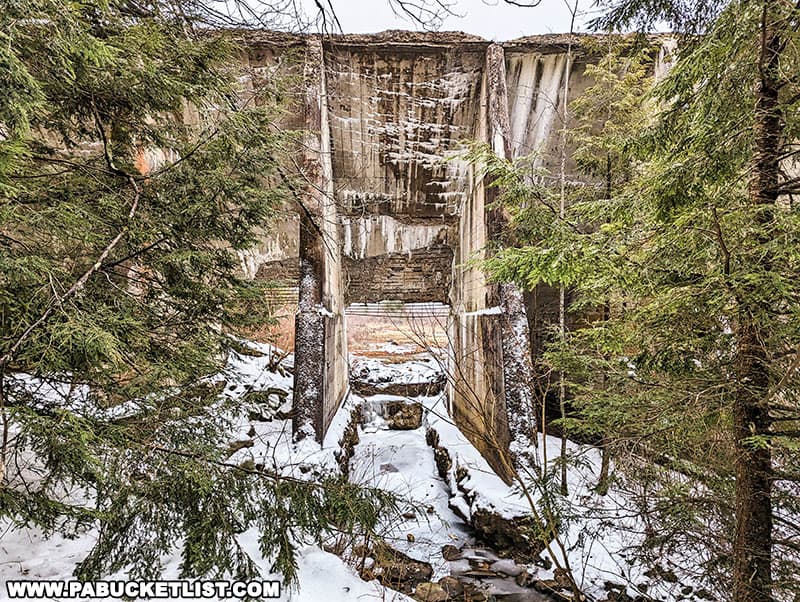
34. Yellow Dog Village
Yellow Dog Village is a former mining company town dating back to the early 1900s that now serves as a time capsule and tourist attraction in Armstrong County, PA.
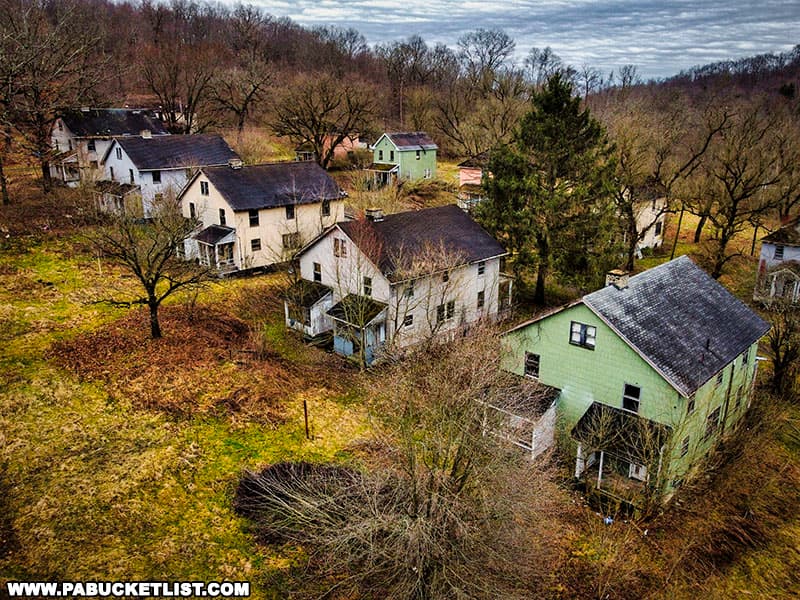
Unlike many so-called “ghost towns” that amount to little more than a sign and the remnants of a few foundations, Yellow Dog Village is a collection of 26 buildings and a park where people lived and played for nearly 100 years.
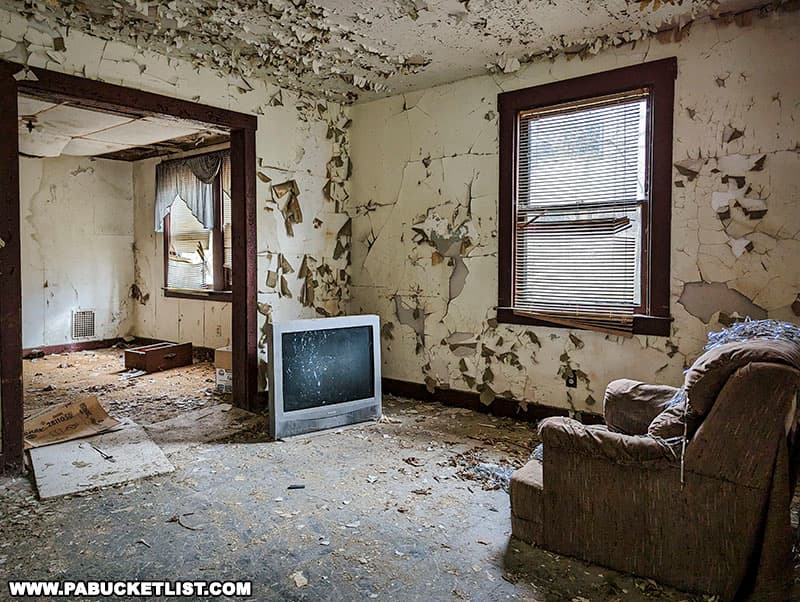
Paid tours of Yellow Dog Village are now available several times a month, with the proceeds being used to help repair some of the homes.
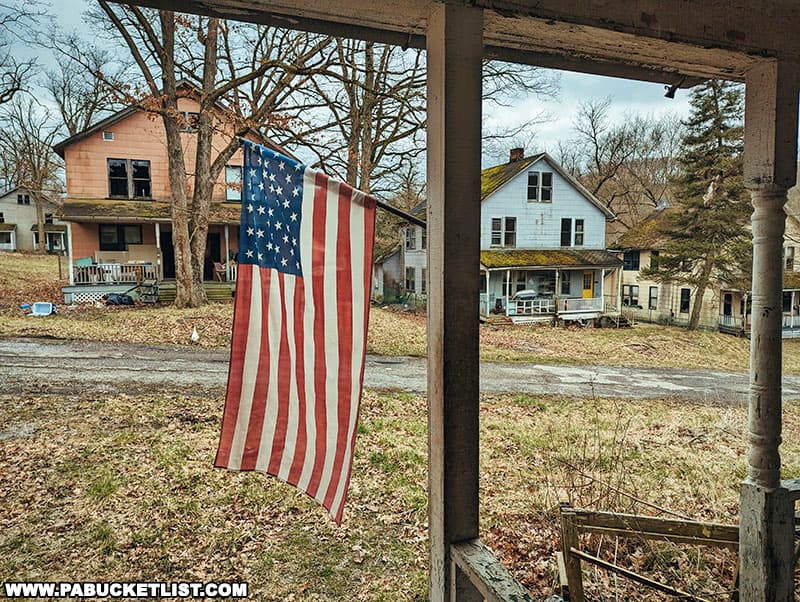
So there you have it – 34 awesomely abandoned places in Pennsylvania you can LEGALLY visit!
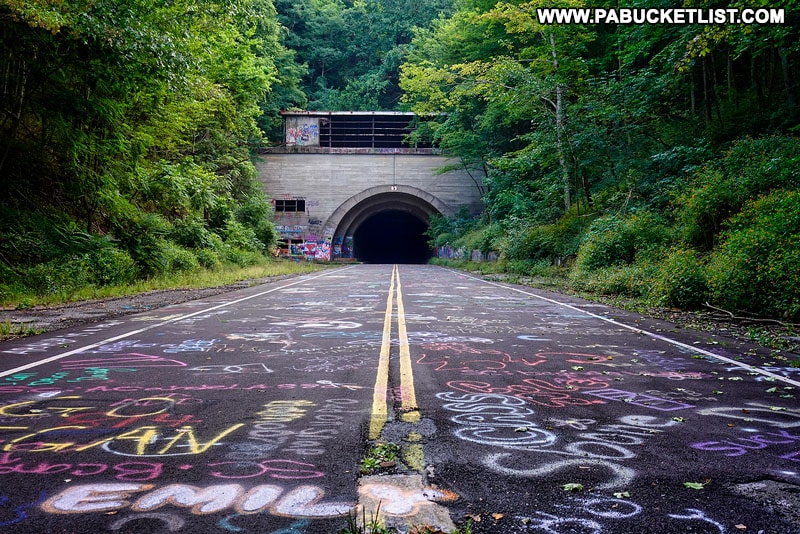
Honorable Mention
The Windber Trolley Graveyard deserves an honorable mention on any list of amazing abandoned places in Pennsylvania.
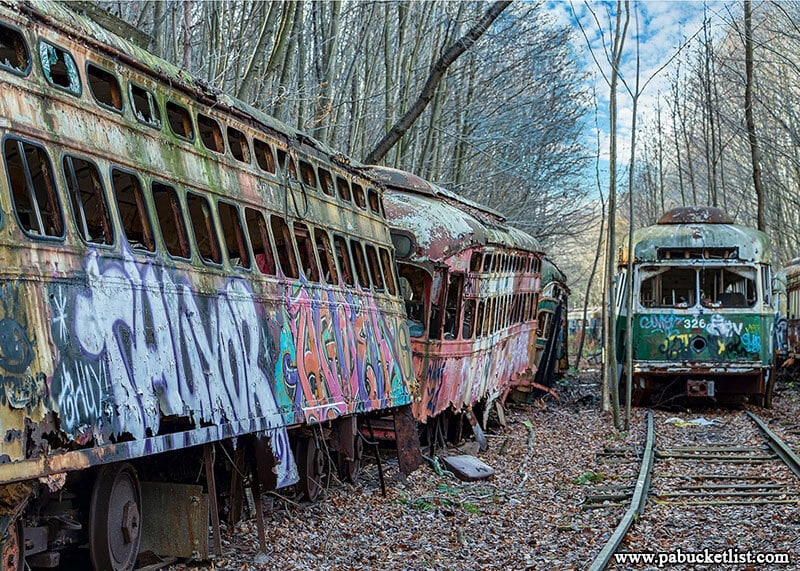
Unfortunately, the sprawling collection of trolleys, trains, and buses was sold to a salvage company in early 2023, and all the cars have either been sold to museums, trolley car collectors, or scrapped.
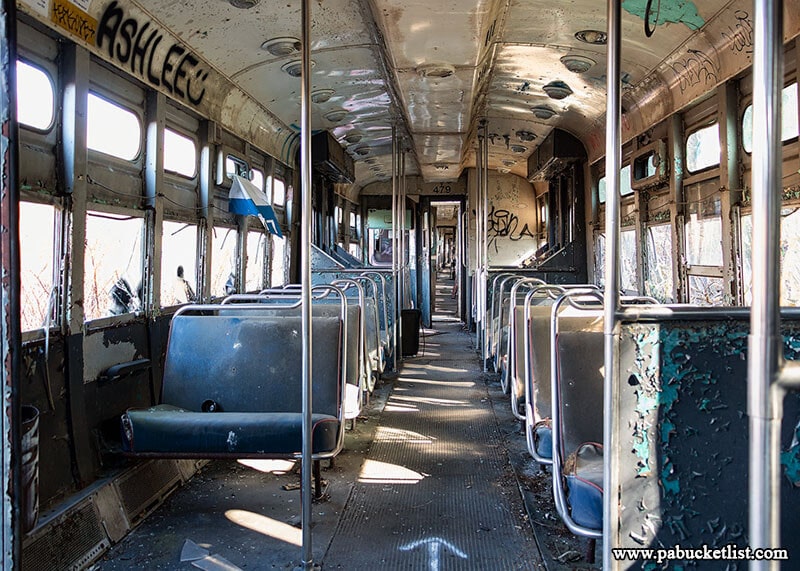
So while the Abandoned Trolley Graveyard no longer exists, my article about it will remain up as a reminder of what was an amazing abandoned attraction in Pennsylvania.
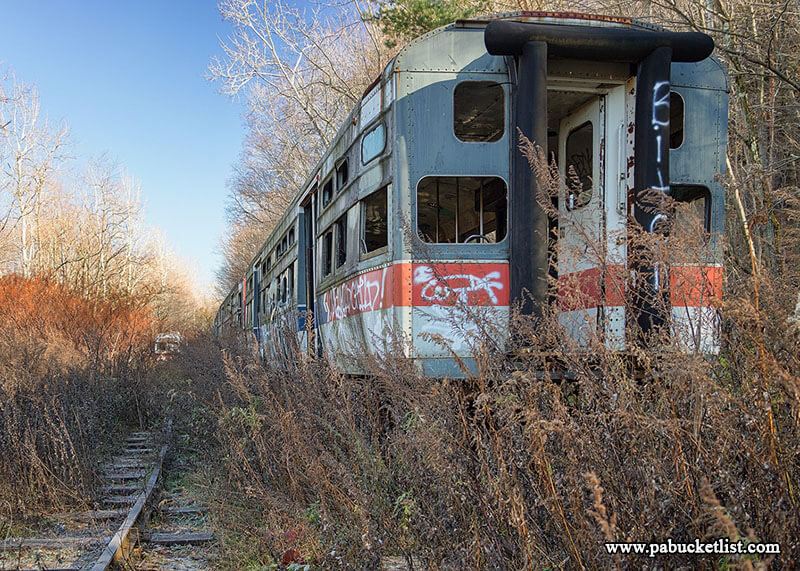
I’m grateful I had the chance to take a personal tour of the property with the owner several years ago, and for the sake of posterity and as a tribute to his collection, I’ll leave my article and photo gallery from that visit intact on my website.

Did you enjoy this article?
If so, be sure to like and follow PA Bucket List on Facebook, Instagram, and/or Pinterest to learn more about the best things to see and do in Pennsylvania!
Click on any of the icons below to get connected to PA Bucket List on social media.


